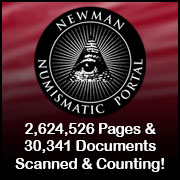
About UsThe Numismatic Bibliomania Society is a non-profit association devoted to the study and enjoyment of numismatic literature. For more information please see our web site at coinbooks.org SubscriptionsThose wishing to become new E-Sylum subscribers (or wishing to Unsubscribe) can go to the following web page link MembershipThere is a membership application available on the web site Membership Application To join, print the application and return it with your check to the address printed on the application. Print/Digital membership is $40 to addresses in the U.S., and $60 elsewhere. A digital-only membership is available for $25. For those without web access, write to: Charles Heck, Treasurer AsylumFor Asylum mailing address changes and other membership questions, contact Chuck at this email address: treasurer@coinbooks.org SubmissionsTo submit items for publication in The E-Sylum, write to the Editor at this address: whomren@gmail.com
BUY THE BOOK BEFORE THE COINSale Calendar
|
- WAYNE'S WORDS: THE E-SYLUM AUGUST 2, 2020
- BUY OR BID SALE 13 CLOSES AUGUST 4, 2020
- HARDIN-HUDSON COUNTERFEIT DETECTION COLLECTION
- NEW BOOK: THE TIFLIS DIRHAMS OF MÖNGKE KHAN
- NEW BOOK: COMMEMORATIVE COIN TALES
- NEW BOOK: NEW ZEALAND CATALOGUE 2020
- NEW BOOK: NOTABLE NOTES
- JOURNAL OF EAST ASIAN NUMISMATICS #19
- HAWAIIAN COINAGE CORRESPONDENCE ON NNP
- VIDEO: HARRY FORMAN INTERVIEW
- AUDIO: NUMISMATIC VISUAL ARTIST JENNA LASH
- ANTIGONID COINS ONLINE LAUNCHED
- NOTES FROM E-SYLUM READERS: AUGUST 2, 2020
- VOCABULARY TERM: UPSETTING
- WILLIAM POILLON (1844-1918)
- HARVEY STACK'S NUMISMATIC FAMILY, PART 75
- THE GREAT DU PONT COIN ROBBERY
- ROYAL CANADIAN MINT HONORS ARTIST BILL REID
- ROBINSON ANCIENT COIN SALE 113 ANNOUNCED
- STACK'S BOWERS GALLERIES AUGUST 2020 AUCTION
- DAVISSONS ANNOUNCES E-AUCTION 36
- GEOFFREY BELL AUCTIONS AUGUST 2020 SALE
- DIX NOONAN WEBB OCTOBER 2020 INDIAN SALE
- WAYNE'S NUMISMATIC DIARY: AUGUST 2, 2020
- STUDY DEBUNKS CULTURAL PROPERTY ALLEGATIONS
- BBC ARTICLE ON LONDON'S MUDLARKS
- 1848 CAL. QUARTER EAGLE COMMEMORATIVE
- DOUBLE STRUCK IKE ON A HALF DOLLAR PLANCHET
- TAIWAN'S STIMULUS VOUCHERS
- ARGENTINA IMPORTS BANKNOTES
- BRITISH COIN AND NOTES TO FEATURE ETHNIC FIGURES
- THE MOST AND LEAST COUNTERFEITED CURRENCIES
- ROMAN BUTIN'S MECHANICAL SWORD COIN
- LOOSE CHANGE: AUGUST 2, 2020
- FEATURED WEB SITE: WORLDCAT.ORG
Click here to access the complete archive
Click here to unsubscribe (scroll down)
To comment or submit articles, reply to whomren@gmail.com
Content presented in The E-Sylum is not necessarily researched or independently fact-checked, and views expressed do not necessarily represent those of the Numismatic Bibliomania Society.
WAYNE'S WORDS: THE E-SYLUM AUGUST 2, 2020
 New subscribers this week include:
Bruce Benoit,
Patrick Kelley, and
Stephen Owen.
Welcome aboard! We now have 6,500 subscribers.
New subscribers this week include:
Bruce Benoit,
Patrick Kelley, and
Stephen Owen.
Welcome aboard! We now have 6,500 subscribers.
Thank you for reading The E-Sylum. If you enjoy it, please send me the email addresses of friends you think may enjoy it as well and I'll send them a subscription. Contact me at whomren@gmail.com anytime regarding your subscription, or questions, comments or suggestions about our content.
This week we open with reminders of the upcoming Kolbe-Fanning and Hardin-Hudson collection sales, four new books, a periodical, updates from the Newman Numismatic Portal and more.
Other topics this week include Hawaiian coinage dies, dealer Harry Forman, Antigonid coins, collectors William Poillon and Harold Bareford, the du Pont coin robbery, multiple upcoming auction sales, London's mudlarks, the 1848 CAL. quarter eagle, banknote news, and the latest coin creation from Roman Butin.
To learn more about Heath's Adjustable Compound Microscope, couterfeit assignats, U.S. commemorative coins, East Asian numismatics, numismatic visual artist Jenna Lash, Haida artist Bill Reid, upsetting and rimming, the Victoria Diamond Jubilee silver medal, the East Indian Railway Gold Pass, old-time dealer Addison Smith, the Gold Celeston, and Taiwan's stimulus coupons, read on. Have a great week, everyone!
Wayne Homren
Editor, The E-Sylum
BUY OR BID SALE 13 CLOSES AUGUST 4, 2020
Here's a reminder that Kolbe & Fanning's Buy or Bid sale closes on Tuesday, August 4, 2020. -Editor
Buy or Bid #13 Closes Tuesday
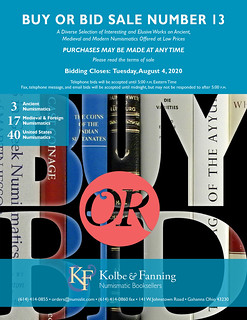 Kolbe & Fanning Numismatic Booksellers' thirteenth “Buy or Bid Sale,” closes Tuesday, August 4, 2020. With hundreds of new additions, the sale focuses on modestly priced books, giving collectors an opportunity to add to their libraries at minimal cost.
Kolbe & Fanning Numismatic Booksellers' thirteenth “Buy or Bid Sale,” closes Tuesday, August 4, 2020. With hundreds of new additions, the sale focuses on modestly priced books, giving collectors an opportunity to add to their libraries at minimal cost.
The sale includes over 1400 works on ancient, medieval and modern coins, as well as general works, periodicals and sale catalogues. “Buy” prices have been kept low to promote sales. To further encourage participation, the firm is offering free domestic shipping to bidders spending at least $300; there is also no packing and processing fee for this sale. Again, please read the Terms of Sale before participating.
As the name of the sale suggests, customers may bid on items they wish to acquire or buy them outright at the published price. The Terms of Sale will give full instructions on how to participate: please read it carefully.
There is no printed catalogue. The PDF catalogue is available now for downloading from the Kolbe & Fanning website at numislit.com. Please send all bids to orders@numislit.com or use the bid sheet included at the end of the PDF catalogue.
To read the earlier E-Sylum article, see:
KOLBE & FANNING BUY OR BID SALE NUMBER 13
(https://www.coinbooks.org/v23/esylum_v23n30a02.html)
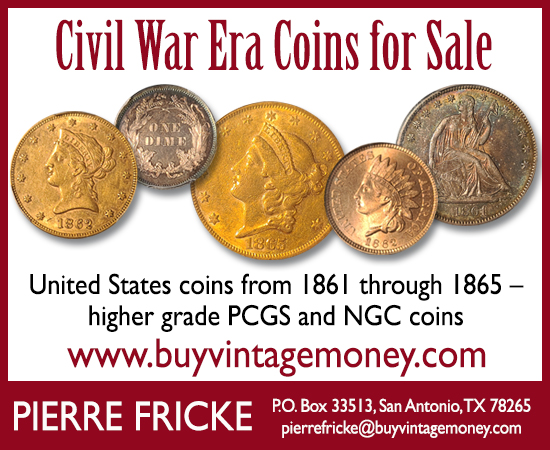
HARDIN-HUDSON COUNTERFEIT DETECTION COLLECTION
Stack's Bowers Galleries is offering the Heather Hardin-Hudson collection of counterfeit detectors and related artifacts and ephemera in their upcoming August 2020 sales. Here are several items that caught my eye. -Editor
Lot 94: Presentation Heath Counterfeit Detector
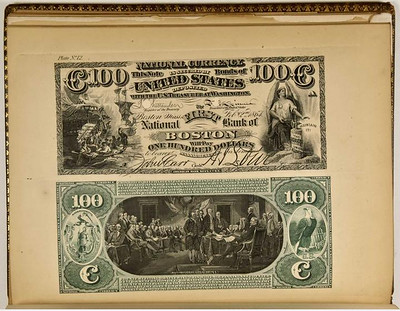
Heath, Laban. HEATH'S GREATLY IMPROVED AND ENLARGED INFALLIBLE GOVERNMENT COUNTERFEIT DETECTOR, AT SIGHT.
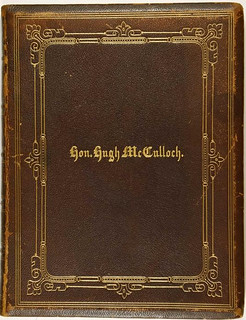 Boston: Innes and Niles, Stereotypers and Printers, 1866/1867. Banking House and Counting Room Edition. Second edition. Newman 2-BH-3(c). Small 4to, original full brown morocco, both covers decoratively paneled in gilt within triple gilt fillets; HON. HUGH MCCULLOCH. impressed in gilt in center of front cover; spine with five raised bands, ruled, lettered, and decorated in gilt; all board edges and inner dentelles intricately decorated in gilt; chocolate endpapers; all page edges gilt. 39, (5) pages, including two final leaves featuring four Heath microscope illustrations printed two apiece on one side of each leaf, facing; finely engraved American Bank Note Company portrait of Secretary of the Treasury Hugh McCulloch bound in place of usual heraldic frontispiece; Treasury Department facsimile letter; unnumbered and unpunched Heath bank note facsimile plate; 12 finely engraved plates of bank notes or elements, with tissue guards, interspersed in the text, comprising impressions of genuine and counterfeit fractional currency notes (Plate 1), 10 engraved plates numbered 2-11 depicting genuine bank note design elements, and an impression of a counterfeit $100 First National Bank of Boston note (Plate 12). Plate 5 printed in green ink; Plate 12 printed in green and black ink and hole-punched as issued. Calligraphic inscription presenting the volume to McCulloch on behalf of the author on opening blank. Binding rubbed and a bit loose, but sound; Plates 4 and 9 are detached from the binding and loosely laid in; light marginal chipping to loose plates. Very good.
Boston: Innes and Niles, Stereotypers and Printers, 1866/1867. Banking House and Counting Room Edition. Second edition. Newman 2-BH-3(c). Small 4to, original full brown morocco, both covers decoratively paneled in gilt within triple gilt fillets; HON. HUGH MCCULLOCH. impressed in gilt in center of front cover; spine with five raised bands, ruled, lettered, and decorated in gilt; all board edges and inner dentelles intricately decorated in gilt; chocolate endpapers; all page edges gilt. 39, (5) pages, including two final leaves featuring four Heath microscope illustrations printed two apiece on one side of each leaf, facing; finely engraved American Bank Note Company portrait of Secretary of the Treasury Hugh McCulloch bound in place of usual heraldic frontispiece; Treasury Department facsimile letter; unnumbered and unpunched Heath bank note facsimile plate; 12 finely engraved plates of bank notes or elements, with tissue guards, interspersed in the text, comprising impressions of genuine and counterfeit fractional currency notes (Plate 1), 10 engraved plates numbered 2-11 depicting genuine bank note design elements, and an impression of a counterfeit $100 First National Bank of Boston note (Plate 12). Plate 5 printed in green ink; Plate 12 printed in green and black ink and hole-punched as issued. Calligraphic inscription presenting the volume to McCulloch on behalf of the author on opening blank. Binding rubbed and a bit loose, but sound; Plates 4 and 9 are detached from the binding and loosely laid in; light marginal chipping to loose plates. Very good.
Newman 2-BH-3(c). A deluxe presentation copy of Heath's Counterfeit Detector, prepared for Hon. Hugh McCulloch, Secretary of the Treasury from 1865 to 1869. Eric Newman discussed the presentation copies in his article "Heath's Counterfeit Detectors: An Extraordinarily Successful Comedy of Errors." There, he wrote that "In addition to standard editions of Heath's publications, there were special editions prepared for dignitaries and for special uses. Public officials customarily were recipients of books with ornate leather bindings and having their names stamped on the covers in gold letters. Each such issue is unique and several have survived." We are aware of the following deluxe presentation bindings of Heath's Detector that have been offered in the numismatic market in the modern era: those presented to Col. Nehemiah G. Ordway (lacks Plate 1); First Assistant Secretary of the Treasury Richard McCormick; Assistant Secretary of the Treasury Charles F. Conant; numismatist Robert Coulton Davis; Superintendent J.R. Kendrick of the Concord Railroad; and one copy that was bound in the same manner but not personalized for presentation. All of these were Banking House and Counting Room editions (varying printings of the second and twelfth editions), and the bindings are all very similar.
Wow - what a great book. Important, rare and impossible to replicate. A centerpiece for any numismatic library. -Editor
To read the complete lot description, see:
Heath, Laban. HEATH'S GREATLY IMPROVED AND ENLARGED INFALLIBLE GOVERNMENT COUNTERFEIT DETECTOR, AT SIGHT.
(https://auctions.stacksbowers.com/lots/view/3-NLLK6/heath-laban-heaths-greatly-improved-and-enlarged-infallible-government-counterfeit-detector-at-sight)
Lot 95: Heath's Adjustable Compound Microscope
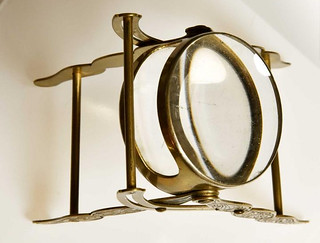
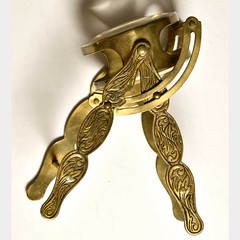
Heath, Laban. HEATH'S IMPROVED ADJUSTABLE COMPOUND MICROSCOPE. FOR EXAMINING BANK NOTES, MINERALS, FLOWERS, SEEDS, LINEN, ETC.
Boston: Manufactured by Laban Heath & Co., Patented, Dec. 25, 1877. Two tilting glass lenses housed in a folding nickel-plated brass frame with decorative scrollwork. The microscope when folded open is 12.5 by 5.5 cm wide at the base and 6 cm in height. The lens has a diameter of 4.25 cm. The patent date is stamped on the inside of one of the legs [diagnostic for Sullivan Type B]. One lens is somewhat scratched in the center; minor overall signs of wear.
The original device, as depicted in some later editions of Heath's Counterfeit Detector. An ingenious contraption, still quite useful. Heath touted it as a "valuable improvement in Pocket Microscopes... As an aid for detecting counterfeit money it has no equal..." Also known in a variant without the patent date stamped on the leg (Sullivan Type A). This is an attractive and eye-catching device that makes for a fabulous accompaniment to a collection of Heath's Counterfeit Detectors
Indeed - a museum piece perfect for numismatic library display. -Editor
To read the complete lot description, see:
Heath, Laban. HEATH'S IMPROVED ADJUSTABLE COMPOUND MICROSCOPE. FOR EXAMINING BANK NOTES, MINERALS, FLOWERS, SEEDS, LINEN, ETC.
(https://auctions.stacksbowers.com/lots/view/3-NLLJC/heath-laban-heaths-improved-adjustable-compound-microscope-for-examining-bank-notes-minerals-flowers-seeds-linen-etc)
Lot 97: Report of the Committee on Preventing the Forgery of Bank Notes
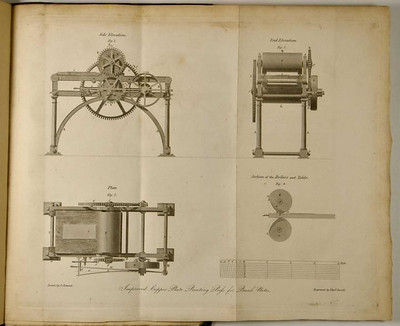
Society of Arts. REPORT OF THE COMMITTEE OF THE SOCIETY OF ARTS, &C. TOGETHER WITH THE APPROVED COMMUNICATIONS AND EVIDENCE UPON THE SAME, RELATIVE TO THE MODE OF PREVENTING THE FORGERY OF BANK NOTES.
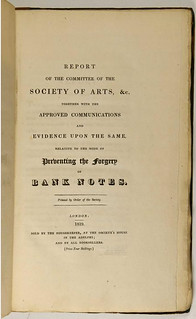 London: Printed by Order of the Society and Sold by the Housekeeper at the Society's House in the Adelphi, 1819. Tall 8vo [25.5 by 16 cm], original paper-backed blue boards. 80 pages, as follows: (4), 1-59, (1), 57*, 58*, 59*, (1), (61)-72, complete as issued; text illustration; plate of T.C. Hansard's Plan for a Typographic Bank Note; finely engraved plate of a Bank of England £1 note design submitted by Thomas Ransom; an exceptional engraved plate of bank note design elements submitted by R.H. Solly; a fine engraved folding plate of a printing press for bank notes also submitted by Solly; and 2 finely engraved steel-printed plates of geometric designs submitted by Richard Williamson. Binding rubbed and with some cracking at joints, but very well-preserved overall and an exceptional copy.
London: Printed by Order of the Society and Sold by the Housekeeper at the Society's House in the Adelphi, 1819. Tall 8vo [25.5 by 16 cm], original paper-backed blue boards. 80 pages, as follows: (4), 1-59, (1), 57*, 58*, 59*, (1), (61)-72, complete as issued; text illustration; plate of T.C. Hansard's Plan for a Typographic Bank Note; finely engraved plate of a Bank of England £1 note design submitted by Thomas Ransom; an exceptional engraved plate of bank note design elements submitted by R.H. Solly; a fine engraved folding plate of a printing press for bank notes also submitted by Solly; and 2 finely engraved steel-printed plates of geometric designs submitted by Richard Williamson. Binding rubbed and with some cracking at joints, but very well-preserved overall and an exceptional copy.
A landmark work, in its original state, untrimmed and bound in the plain boards in which it was issued. In the three or four years preceding publication, "convictions before the criminal courts for the circulation of Forgeries of the Bank of England Note" had risen precipitously, resulting in the "increasing reluctance of Juries to visit with the extreme penalty of the law." This impressive production presents the results of "an investigation for the purpose of ascertaining whether there exist any means, within the compass of the fine and the mechanical arts, not of totally preventing the Forgery of Bank Notes (for that is obviously impossible), but of increasing the difficulty of imitation, and thus of checking the prevalence of the crime." The committee's findings, largely penned by Thomas Curson Hansard, had great impact on the course of anti-counterfeiting measures and technology in America as well as Great Britain. Many of the suggestions for technological improvements were in fact derived from American sources. Very scarce, and the only copy we have encountered in its original state.
An absolute classic title - a groundbreaking work that every numismatic bibliophile would appreciate. -Editor
To read the complete lot description, see:
Society of Arts. REPORT OF THE COMMITTEE OF THE SOCIETY OF ARTS, &C. TOGETHER WITH THE APPROVED COMMUNICATIONS AND EVIDENCE UPON THE SAM...
(https://auctions.stacksbowers.com/lots/view/3-NLLKG/society-of-arts-report-of-the-committee-of-the-society-of-arts-c-together-with-the-approved-communications-and-evidence-upon-the-sam)
Lot 98: Thompson's Autographical Counterfeit Detector
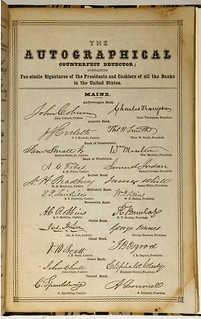 Thompson, J. THE AUTOGRAPHICAL COUNTERFEIT DETECTOR; COMPANION TO THE BANK NOTE REPORTER, GIVEN, FREE OF CHARGE, TO ALL WEEKLY AND SEMI-MONTHLY SUBSCRIBERS TO THE REPORTER, CONTAINING FAC-SIMILE SIGNATURES OF THE PRESIDENT AND CASHIER OF EVERY BANK IN THE UNITED STATES.
Thompson, J. THE AUTOGRAPHICAL COUNTERFEIT DETECTOR; COMPANION TO THE BANK NOTE REPORTER, GIVEN, FREE OF CHARGE, TO ALL WEEKLY AND SEMI-MONTHLY SUBSCRIBERS TO THE REPORTER, CONTAINING FAC-SIMILE SIGNATURES OF THE PRESIDENT AND CASHIER OF EVERY BANK IN THE UNITED STATES.
New York: Published by Wm. W. Lee, Printer, No. 12 Spruce Street, 1852. Fourth edition. 8vo, modern brown quarter morocco, gilt, with marbled boards. (4), 60 pages; containing over 1500 facsimile signatures. Leaves a bit worn, with some corners torn or missing. Very good in a fine binding.
Dillistin page 150: "Probably the most unique publication in the banking field... While the facsimile signatures presented in this detector were of great value to those handling State bank notes who might question the genuineness of signatures appearing thereon, they were no doubt of inestimable value to the swindler and crook engaged in counterfeiting such notes. For that reason alone it is rather surprising that such a publication ever existed." Thompson's Bank Note Reporter was "issued to regular subscribers weekly, semi-weekly and monthly" and weekly subscribers received not only a complimentary copy of The Autographical Counterfeit Detector but a copy of the heavily illustrated Coin Book as well. Today, both are quite rare, particularly the former, suggesting that either weekly subscribers were few and far between or that the ephemeral nature of these publications engendered a miniscule survival rate. While this copy was bound without the wraps (which include the publisher's imprint and date), it can be established as the 1852 fourth edition by its introduction, which varies from issue to issue, and its pagination.
Another rarity, and an unusual and important example of the counterfeit detector genre. -Editor
To read the complete lot description, see:
Thompson, J. THE AUTOGRAPHICAL COUNTERFEIT DETECTOR; COMPANION TO THE BANK NOTE REPORTER, GIVEN, FREE OF CHARGE, TO ALL WEEKLY AND SEMI-...
(https://auctions.stacksbowers.com/lots/view/3-NLLJY/thompson-j-the-autographical-counterfeit-detector-companion-to-the-bank-note-reporter-given-free-of-charge-to-all-weekly-and-semi-)
Lot 6426: Dye's Bank Mirror
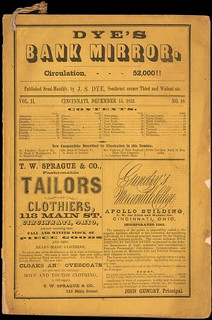 Dye, J.S. DYE'S BANK MIRROR. Vol. II, No. 19 (Cincinnati, December 15, 1852).
Dye, J.S. DYE'S BANK MIRROR. Vol. II, No. 19 (Cincinnati, December 15, 1852).
4to, original printed yellow paper covers. 40 pages. Tied in corner for hanging; a bit worn at extremities. Very good or so. Very rare: mentioned, but not cited in Dillistin, and a title that was not to be found in the extensive Newman Library. In addition to its regular listings, this issue includes illustrated warnings of eight new counterfeits.
Very rare, as are so many of these ephemeral publications. Many examples are the only copy known to exist today. -Editor
To read the complete lot description, see:
Dye, J.S. DYE'S BANK MIRROR. Vol. II, No. 19 (Cincinnati, December 15, 1852).
(https://auctions.stacksbowers.com/lots/view/3-NLOI1/dye-js-dyes-bank-mirror-vol-ii-no-19-cincinnati-december-15-1852)
Lot 6432: A. S. Gear National Bank Note Detecter
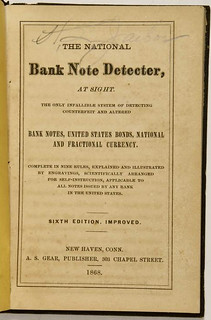 Gear, A.S. [publisher]. THE NATIONAL BANK NOTE DETECTER, AT SIGHT. THE ONLY INFALLIBLE SYSTEM OF DETECTING COUNTERFEIT AND ALTERED BANK NOTES, UNITED STATES BONDS, NATIONAL AND FRACTIONAL CURRENCY.
Gear, A.S. [publisher]. THE NATIONAL BANK NOTE DETECTER, AT SIGHT. THE ONLY INFALLIBLE SYSTEM OF DETECTING COUNTERFEIT AND ALTERED BANK NOTES, UNITED STATES BONDS, NATIONAL AND FRACTIONAL CURRENCY.
Sixth Edition, Improved. New Haven: A.S. Gear, 1868. 16mo, original dark brown pebbled cloth, both sides bordered in blind; front cover with short-title impressed in gilt within oval; yellow endpapers. 79, (1) pages, including 16 full-page woodcut engravings of a simulated bank note, eight of which depict the appearance of genuine design elements, the other eight illustrating counterfeit design elements. Cloth binding somewhat worn, particularly on upper board and spine; pencil writing on endpapers; contents near fine.
Very rare. Not in the Newman, Bass, or Fuld Library sales; the 1866 edition was present in the Ford and the Stack Family Libraries. The Armand Champa Library had this edition, though it was in a later binding. Gear's treatise was a predecessor of Laban Heath's ubiquitous publications on the topic, from which, as Eric Newman notes, Heath "adopted many of his concepts and expressions." The illustrations are not finely produced for the reason stated in the introduction: "These engravings are executed in a coarse manner, that the difference between the counterfeit and genuine may be more easily distinguished."
Quite rare and very important in the history of bank note detectors. -Editor
To read the complete lot description, see:
Gear, A.S. [publisher]. THE NATIONAL BANK NOTE DETECTER, AT SIGHT. THE ONLY INFALLIBLE SYSTEM OF DETECTING COUNTERFEIT AND ALTERED BANK ...
(https://auctions.stacksbowers.com/lots/view/3-NLOMK/gear-as-publisher-the-national-bank-note-detecter-at-sight-the-only-infallible-system-of-detecting-counterfeit-and-altered-bank-)
Lot 6450: Rawdon Wright & Hatch Wooden Lockbox
Rawdon, Wright, Hatch & Co. WOODEN LOCKBOX DECORATED WITH VIGNETTES FROM BANK NOTES AND LINED WITH PRINTED ENGRAVINGS TAKEN FROM BANK NOTES AND OTHER WORK.
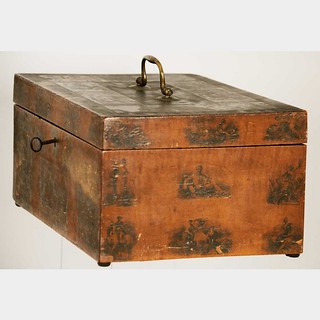 Wooden box [30.5 by 20.5 by 13.5 cm when closed], hinged at top and with brass carrying handle, with functioning lock and original key. Exterior surfaces decorated with vignettes and design elements used on paper money, the work of Durand, Perkins & Co. Two interior compartments lined with paper printed with various bank note designs and design elements, the work of Rawdon, Wright, Hatch & Co. and similar to the firm's Specimen of Bank Note Engraving proof sample sheets. Exterior somewhat darkened with age, with some blistering of surface at front and staining to back; undecorated bottom of box cracked, with crack extending through base of left side. Interior decorative lining rather worn, particularly in the front compartment. Still intact and impressive in appearance. A remarkable artifact of 19th-century bank note engraving. This still-function lockbox likely dates from the 1830s, and bears designs that are identical to sample proof sheets titled Specimen of Bank Note Engraving distributed by Durand, Perkins & Company (1828-1831) and Rawdon, Wright, Hatch & Company (1832-1847). While worn, it remains truly impressive in appearance and makes for a fantastic accompaniment to a collection of obsolete currency and related items.
Wooden box [30.5 by 20.5 by 13.5 cm when closed], hinged at top and with brass carrying handle, with functioning lock and original key. Exterior surfaces decorated with vignettes and design elements used on paper money, the work of Durand, Perkins & Co. Two interior compartments lined with paper printed with various bank note designs and design elements, the work of Rawdon, Wright, Hatch & Co. and similar to the firm's Specimen of Bank Note Engraving proof sample sheets. Exterior somewhat darkened with age, with some blistering of surface at front and staining to back; undecorated bottom of box cracked, with crack extending through base of left side. Interior decorative lining rather worn, particularly in the front compartment. Still intact and impressive in appearance. A remarkable artifact of 19th-century bank note engraving. This still-function lockbox likely dates from the 1830s, and bears designs that are identical to sample proof sheets titled Specimen of Bank Note Engraving distributed by Durand, Perkins & Company (1828-1831) and Rawdon, Wright, Hatch & Company (1832-1847). While worn, it remains truly impressive in appearance and makes for a fantastic accompaniment to a collection of obsolete currency and related items.
Wow - what an unusual item! A real museum piece. -Editor
To read the complete lot description, see:
Rawdon, Wright, Hatch & Co. WOODEN LOCKBOX DECORATED WITH VIGNETTES FROM BANK NOTES AND LINED WITH PRINTED ENGRAVINGS TAKEN FROM BANK NO...
(https://auctions.stacksbowers.com/lots/view/3-NLOK3/rawdon-wright-hatch-co-wooden-lockbox-decorated-with-vignettes-from-bank-notes-and-lined-with-printed-engravings-taken-from-bank-no)
Lot 6472: Willis Bank Note List December 1850
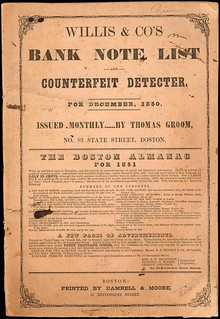 Willis & Co. WILLIS & CO.'S BANK NOTE LIST, AND COUNTERFEIT DETECTER. Vol. VIII, No. 3.
Willis & Co. WILLIS & CO.'S BANK NOTE LIST, AND COUNTERFEIT DETECTER. Vol. VIII, No. 3.
Boston: Thomas Groom, December 1850. 4to, original printed paper covers. (2), 24, (2) pages. Very good. Although it was published from 1843 to 1854, copies of this Boston periodical are rarely encountered today. A single issue brought over $500 in the 2018 sale of the Eric P. Newman Library. Dillistin, pages 112-113.
Just one of many very rare items in this consignment. See the full list online. -Editor
To read the complete lot description, see:
6472 Willis & Co. WILLIS & CO.'S BANK NOTE LIST, AND COUNTERFEIT DETECTER. Vol. VIII, No. 3.
(https://auctions.stacksbowers.com/lots/view/3-NLOKN/willis-co-willis-cos-bank-note-list-and-counterfeit-detecter-vol-viii-no-3)
For more information, or to bid, see:
https://auctions.stacksbowers.com/lots?sort=sale_date&search=hardin-hudson&limit=96&lots_range=upcoming
Consignor Heather Hardin-Hudson is an E-Sylum subscriber. -Editor
She writes:
"Thank you for the attention you are giving my collection; and it's an honor to be featured in an issue of The E-Sylum. My collection took a lifetime to acquire and I would like to know that my fellow readers will be the ones to appreciate these rarities.
"A great deal of the items are lumped together with other items and are not even shown. You have to click on the individual lots and read the descriptions to even know they are there."

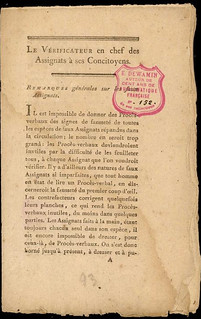
Lots 6471 and 6425
Here are a few additional lots she thought deserving of special attention. We're low on space here but click the links to see the lot descriptions. -Editor
Lot #93: Extremely Rare 1850 Counterfeit Detector : Universal Counterfeit Detector. H. C. Foote- The Only Second Edition.- See the Coinbooks.org article written by Michael J. Sullivan.
Lot #6471: Bank Note Company Trade Cards & Advertising Circulars : Engravers Advertising Trade Cards- Featuring an original business card of Gilbert Stuart the famous portrait artist, and many more. The cards are not shown in the pictures, and are barely described. Some are virtually unattainable.
Lot #6425: Report on Counterfeits of French Revolutionary Assignats : A French Descriptive Counterfeit Detector written in 1793 during the Revolution.
Lot #6431: Foreign Bank Notes. WORKS ON THE COUNTERFEITING OF FOREIGN BANK NOTES AND RELATED SUBJECTS : 4 Volumes available only to Interpol, and other Secret Service Agencies showing United States and World Counterfeit banknotes and coins spanning 1933-1938.
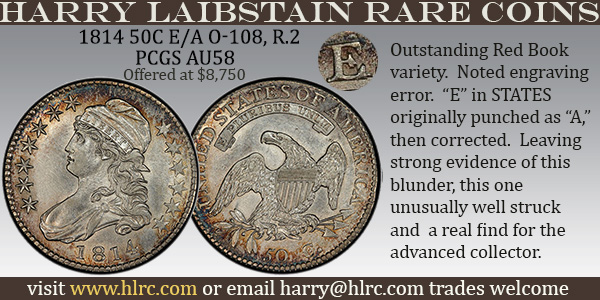
NEW BOOK: THE TIFLIS DIRHAMS OF MöNGKE KHaN
The American Numismatic Society is taking advance orders for the latest volume in the Numismatic Notes and Monographs series. -Editor
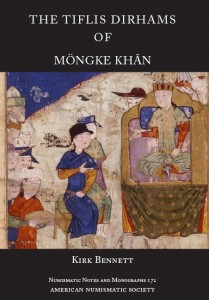 The Tiflis Dirhams of Möngke Khan
The Tiflis Dirhams of Möngke Khan
(Numismatic Notes and Monographs 172)
by Kirk Bennett
List price: $75 plus shipping & handling
Member price: $52.50 plus shipping & handling ISSN 0078-2718
ISBN 978-0-89722-362-5
Hardcover, 188 pages, color figures
The dirhams of Möngke Khan represent the first major emission of silver coinage in Georgia following the Mongol conquest roughly a generation previously. Struck in the Georgian capital city of Tiflis (modern Tbilisi) from the middle of AH 652 to perhaps as late as the first month of AH 660 (AD 1254–1261), these coins circulated widely throughout the South Caucasus and adjacent areas.
This coin type was the first in Georgia to provide a date formula with both the month and year of the Islamic calendar. The placement of the date formula in the four marginal segments of the reverse of the coin means that parts of it are often struck off the flan or effaced on individual specimens. The problem is compounded by poor Arabic calligraphy on many coins, leading to much confusion in the literature about the extant dates. However, using secondary design features such as the varying central obverse and reverse decorative elements, this book creates a systematic framework for dating these dirhams, identifying previously unpublished dates and varieties in the process.
The first in-depth monograph on this popular and historically important coin series, this book will be a valuable resource for both scholars and collectors interested in Georgian, Mongol, and Islamic numismatics.
ABOUT THE AUTHOR
An expert on Georgian numismatics, Kirk Bennett is the author of A Catalog of Georgian Coins. The only comprehensive compendium of Georgian coin types, dates, and varieties in any Western European language, the Catalog has become a standard reference for coins of Georgia across all time periods. Bennett has also authored or co-authored articles on Georgian numismatics for the Journal of the Oriental Numismatic Society. He is a retired diplomat who served overseas in Istanbul, Moscow, Vienna, Warsaw, and Kyiv. A graduate of Georgetown and Indiana Universities where he majored in Slavic Studies, he currently lives in Vienna, Virginia.
For more information, or to order, see:
The Tiflis Dirhams of Möngke Khan
(http://numismatics.org/store/nnm172/)
NEW BOOK: COMMEMORATIVE COIN TALES
Peter Jones recently published a new book on U.S. commemorative coins. -Editor
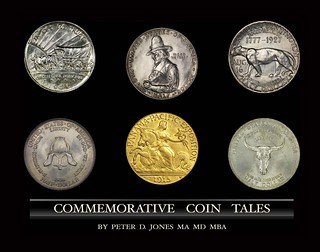 COMMEMORATIVE COIN TALES
COMMEMORATIVE COIN TALES
Hardback letter size landscape format, 372 pages. Foreword by Ken Bressett. Profuse color illustrations, fully indexed with glossary. © 2019
A collection of US Classic Commemorative coins. This book explores the history behind 72 US coins — the sculptors, the promotors, the politicians and the history. Each vignette is a fascinating four-page night-time read.
TEN CHAPTERS
- Why do we collect
- Brief history of commem coins
- 10 cities commemorated
- 3 Civil War commemoratives
- 4 Expositions commemorated 14 historical coins
- 5 coins about people
- Coins about twelve states
- Gold commemoratives
- Other quasi-commemoratives
- Glossary and Index
If you would like a copy please mail your name and address, and a check for $79 (includes US mailing) to Peter Jones, Box 1, Windham Center, CT 06280
Here's an excerpt from Ken Bressett's excellent Foreword to the book. -Editor
In ancient times, long before newspapers or any expedient means of mass communications, coins were extensively used to spread messages far and wide. The designs were simple and easy to interpret by even the illiterate. They identified the current rulers, gods and goddesses, ongoing wars and victors, and whatever propaganda the issuing authority wanted to convey. Modern commemorative coins are similar in many ways in their role of recording art, history, geography and politics in an artistic form.
In reading this book you are about to embark on a journey through the history and meaning of a group of special commemorative coins made in the United States to honor persons, places and events dear to the hearts of Americans. I am sure you will find the author's descriptions and comments both educational and inspiring. Perhaps it will stimulate you to delve even further into the entertaining world of numismatics to discover for yourself the multitude of stories that exist for coins of all stripes from all ages, as well as for all countries. It is a pursuit that has unfortunately been ignored by far too many, and way too often.
What you are about to see is one man's journey into the fascinating world of numismatics. His passion for the subject is obvious, and likely infectious. His intent in writing this account is to inspire and pass on to his family some of the reasons he has dedicated part of his busy life to the study and collecting of these very special coins. His experience had its own flavor and direction as seems to be true of most of us who delve into the expansive world of numismatics. There are no set rules or boundaries to the way collectors enjoy the hobby. Each sets his or her own course and objectives. Each derives from the experience a sense of satisfaction, pleasure and achievement consistent with the amount of time and effort invested. Research has shown that having an absorbing hobby is not only a healthy pursuit but also fosters a happy long life. I would encourage all who read this book to look even further into the subject and discover for yourself the rich rewards of numismatic study.
I have a copy of the book and can attest that it's quite impressive. The oblong hardcover book is sturdy and heavy, and arrived well-protected in boxed double bubble wrap. The pages are glossy heavy stock and loaded with great large-size color photos not just of coins, but of the people, places and artifacts making up the fascinating stories behind many of these classic coins. The 11-page index makes finding topics easy.
One item I wasn't aware of was the $1,000 ornamental presentation box President McKinley had made in order to present the first Lafayette Dollar to French President Emile Loubet (p221). The book is full of interesting facts and photos like this, making it well worth a read even by those certain they're already learned all there is to know about the subject. Peter Jones proves that a new set of eyes can often locate details overlooked or glossed over in earlier publications. Recommended for any student of U.S. numismatics. -Editor
THE BOOK BAZARRE
NEW BOOK: NEW ZEALAND CATALOGUE 2020
Renniks is offering the new edition of The John Bertrand New Zealand Coin and Banknote Catalogue . Here's the information from their site. The book may be available elsewhere as well. -Editor
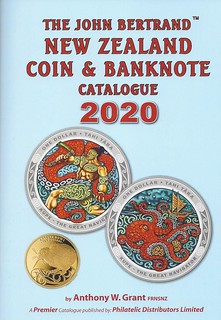 The John Bertrand New Zealand Coin and Banknote Catalogue 2020
The John Bertrand New Zealand Coin and Banknote Catalogue 2020
$21.95
The 2020 catalogue features important information regarding all New Zealand coins issued from 1933 and includes updated values with retail prices given in five grades for the pre-decimal issues. A full listing of decimal issues is also included.
ISBN 9780994133779
DESCRIPTION
The John Bertrand New Zealand Coin and Banknote Catalogue 2020.
The 2020 catalogue features important information regarding all New Zealand coins issued from 1933 and includes updated values with retail prices given in five grades for the pre-decimal issues. A full listing of decimal issues is also included.
New Zealand Coin and Banknote Catalogue features information about all New Zealand legal tender coins that have been minted since 1933. It includes the maximum and actual mintages produced. Prices given in five grades.
This catalogue features important information regarding all New Zealand coins issued from 1933 and includes updated values with retail prices given in five grades for the pre-decimal issues. A full listing of decimal issues is also included.
The 2020 edition is edited by Jared H. Thornton and has a hugely expanded “Checks, Discount & Special Purpose Tokens” section, previously four pages and now expanded to eleven pages, courtesy of Martin Purdy FRNSNZ, and again includes five pages of information on all the major coin “varieties”, also compiled by Martin Purdy, all being shown with values in the category pages. New Zealand banknotes are covered from 1934 with prices given in up to six grades, including first and last prefixes in the decimal section.
The catalogue as always includes simplified listings of Tradesmen's Tokens, Communion Tokens, Internment Camp Tokens, Checks, Discount & Special Purpose Tokens and Mint Rolls.
For more information, or to order, see:
The John Bertrand New Zealand Coin and Banknote Catalogue 2020
(https://renniks.com/shop/new-zealand-coins-banknotes-tokens-2020/)
NEW BOOK: NOTABLE NOTES
Peter Jones has also reprinted his 2010 book, Notable Notes: A History of United States Currency. It is available in hardcover, softcover, and as an e-book. -Editor
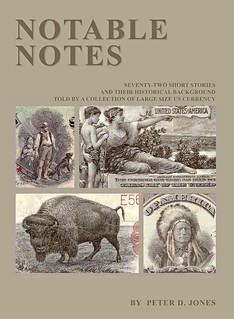 Hardback letter size book, 382
pages, profusely illustrated in
color. Foreword by Wendell
Wolka. © 2010, reprinted 2020.
Hardback letter size book, 382
pages, profusely illustrated in
color. Foreword by Wendell
Wolka. © 2010, reprinted 2020.
Seventy-two short stories and their historical background told by a collection of large size US currency. The complex history of the beginnings of today's bank notes simply laid out.
TWENTY-ONE CHAPTERS
- Why do we collect
- Brief history of paper money
- Large size currency types
- Demand Notes
- Legal Tender Notes (3 chapters)
- Interest Bearing Issues
- History of silver and finance
- Silver Certificates (3 chapters)
- Gold Certificates
- Coin or Treasury Notes
- Federal Reserve Notes
- Federal Reserve Bank Notes
- National Bank Notes, 4 chapters
- 47-page glossary and index
For more information, or to order, see (click on "Academic Books"):
Notable notes: a history of United States currency, by Peter Jones
(http://www.artsandacademic.net/e-publications.php)
Here's the book's Foreword by Wendell Wolka. -Editor
First impressions are always interesting and often memorable. I first met Peter at one of the American Numismatic Association's Summer Seminars which are held annually in Colorado Springs, Colorado. He was a student in a course I was teaching that year, "An Introduction to Paper Money." It's one of those survey courses that gives students a flavor of many different aspects of paper money but cannot get into a lot of detail on any one of them because of time limitations. This is usually perfect for new collectors who are just trying to understand what might be out there that would be of interest to them.
Peter admitted that he was primarily a coin collector (I have long since forgiven him for that.) When you teach these classes you always worry that the students just might sit there for the week, never utter a question or an opinion, and leave it to you to do all of the talking. Peter quickly relieved me of that concern. He was always curious WHY certain things happened the way they did. And they were always GOOD questions--ones that kept the instructor's brain racing to come up with an answer sometimes. I remember answering one of Peter's inquiries with an exasperated "Peter, they did it that way because they could!"
This book makes me feel quite proud. I can now actually point to one of my former students and fellow numismatists as a definite convert from collecting those "little round metallic discs that go 'clunk' when dropped on their heads" to paper money! And it is clear that Peter enjoys the subject and has used his curiosity and intellect to weave together a wonderful set of stories, history lessons, and little known facts based on seventy-two "notable notes" which he has selected.
This well illustrated book is an easy read which will leave you knowing more than before you read it whether you are brand new to paper money or a veteran "rag picker." And that, after all, is what numismatics is all about: sharing information with others so that we can collectively build the foundation of knowledge for both present and future generations of collectors.
Well done, Peter, well done!

JOURNAL OF EAST ASIAN NUMISMATICS #19
The 19th issue of The Journal of East Asian Numismatics (JEAN) has been published. Publisher & Editor-in-Chief Michael Chou penned this Foreword to the issue. -Editor
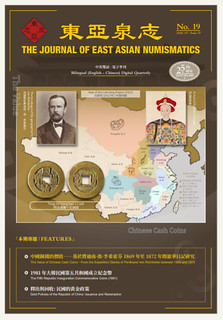 In this issue, we have an extremely interesting article by
our editor on the coin rubbing book of Howard Franklin
Bowker during his stay in the far east from the 1920s to
the 1930's. Bowker was in Shanghai, Wuhan, Ningpo, and
travel also to Korea to acquire and view many interesting
Chinese and Korean cash coins and charms.
In this issue, we have an extremely interesting article by
our editor on the coin rubbing book of Howard Franklin
Bowker during his stay in the far east from the 1920s to
the 1930's. Bowker was in Shanghai, Wuhan, Ningpo, and
travel also to Korea to acquire and view many interesting
Chinese and Korean cash coins and charms.
For this issue, we have the forward to the 3rd book in the series of the Medallic Memories - 100 Years of Financial History by the former ICBC chairman Jiang Jianqing. This book continues the fantastic story of financial history with his collection of medals, which has been a best seller in the Chinese financial book sector.
Our friend Thomas Ullmann writes another article for us, this time on the value of Chinese cash coins based on diaries of Ferdinand von Richthofen.
Jeff Garrett has an informative overview article on the fabulous National numismatic collection at the Smithsonian national museum of American history. The NNC holds one of the greatest numismatic collections in the world and is a wonderful resource for researchers.
We also have an article we originally published in the 1990s by our senior editor bruce smith on the discovery of the Eduard Kann's banknote collection by Andy Lustig.
We also have an interesting interview with Stephen by our friend Colin Gullberg for the chopmark club. Colin and I this March traveled to Xinzhu to visit with Stephen, which was an excellent visit to discuss new projects together. We start a series of articles with Stephen Dai of Xinzhu, he is a renowned expert in Chinese silver ingots, financial history, and gold ingots. He has written many books on this area, and we will also have two book reviews on Chinese gold policy and gold ingots
Our German correspondent Oliver Strahl gives us a detailed report of the effects of COVID 19 in numismatics.
From this issue, we will start a series of articles with a license from NGC by David Vagi, a world-famous ancient coins expert, researcher, and director of NGC Ancients. We hope our readers can gain knowledge of the fabulous history of ancient coins from David's articles.
We also have an interesting article by Mark Lovmo on the fifth republic inauguration commemorative coins. Mark and I visited leading Korean numismatic company Hwadong last July in Seoul, as he continues his work on the Korea numismatics. We hope to have a book project in the future in this interesting area to reveal new information on Korean numismatics.
PCGS's Jay Turner has an informative article on the special striking of British commonwealth coins. We hope there is something interesting for everyone in this issue and look forward to meeting everyone again in the future.
Starting September, we will start the 3rd survey to select the Top Chinese coins for the 3rd edition of Top Chinese Coins. Like the first survey, we will select gold, silver, and copper coins. The survey period will be September 2020 to December 2020, and we expect to have the 3rd edition of Top Chinese Coins by the Fall of 2021.
To read the complete issue, see:
The Nineteenth Issue of JEAN
(https://issuu.com/jeandigitala1/docs/jean_19)
To read the earlier E-Sylum article, see:
JOURNAL OF EAST ASIAN NUMISMATICS #18
(https://www.coinbooks.org/v23/esylum_v23n19a04.html)
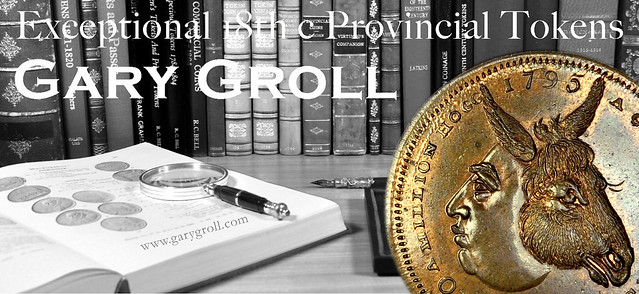
HAWAIIAN COINAGE CORRESPONDENCE ON NNP
The latest addition to the Newman Numismatic Portal is about the dies for Hawaiian coinage. Project Coordinator Len Augsburger provided the following report. -Editor
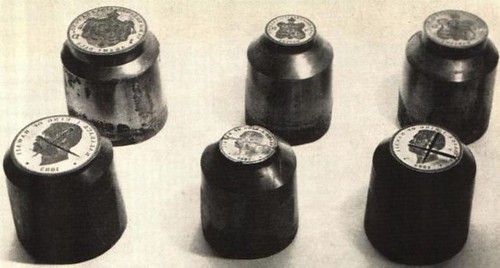
The Hawaiian Coinage That Wasn't
While the National Archives remain closed for onsite visits, Newman Portal continues its development of this content with transcription activities. Currently, selected letters from the general correspondence series (Record Group 104, Entry 1) are being transcribed and made available via Newman Portal. An 1890 letter from Mint Director Edward O. Leech to Philadelphia Mint Superintendent Oliver C. Bosbyshell, for example, asks if the hubs for the 1883 Hawaiian coinage are on hand, and further asks for a cost estimate to strike a number of 10-cent and 5-cent pieces.
The U.S. government had struck 1883-dated Hawaiian coinage at the San Francisco Mint in 1883 and 1884. No response to Leech is recorded, but an article in the February 1960 Numismatist notes that the Hawaiian obverse dies, then in the Archives of Hawaii, were defaced in 1888. This explains why Leech asked about the hubs and not the dies – whoever initially inquired on behalf of Hawaii likely knew the dies were defaced. In any case, no response to Leech is recorded, and no additional Hawaii coinage beyond the 1883-1884 strikings is known today. Newman Portal acknowledges Roger Burdette and Nicole Fry for assistance with transcriptions of National Archives documents.
Link to National Archives Record Group 104, Entry 1 (U.S. Mint general correspondence) on Newman Portal:
https://nnp.wustl.edu/library/archivedetail/515202
Link to The Numismatist on Newman Portal
https://nnp.wustl.edu/library/publisherdetail/510969
VIDEO: HARRY FORMAN INTERVIEW
These are selections from the David Lisot Video Library that feature news and personalities from the world of coin collecting. David has been attending coin conventions since 1972 and began videotaping in 1985. The Newman Numismatic Portal now lists all David's videos on their website at:
https://nnp.wustl.edu/library/multimediadetail/522852
Here's one on Philadelphia dealer Harry Forman. -Editor
PNG Living History: Harry Forman, 10/1/88
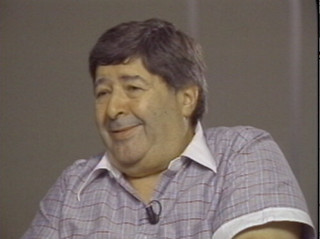 David Lisot interviews Philadelphia coin dealer Harry Forman in October 1988. Harry was instrumental in the coin boom of the 1960's and talks about the markets and how rolls of coins played such an important part. He shares about other dealers of those early days.
David Lisot interviews Philadelphia coin dealer Harry Forman in October 1988. Harry was instrumental in the coin boom of the 1960's and talks about the markets and how rolls of coins played such an important part. He shares about other dealers of those early days.
An excerpt of the video is available for viewing on the Coin Television YouTube Channel at:
https://youtu.be/3Ev5TAAxw6E

AUDIO: NUMISMATIC VISUAL ARTIST JENNA LASH
The American Numismatic Society has published a new episode of their podcast, The Planchet. -Editor
An Interview with Numismatic Visual Artist Jenna Lash
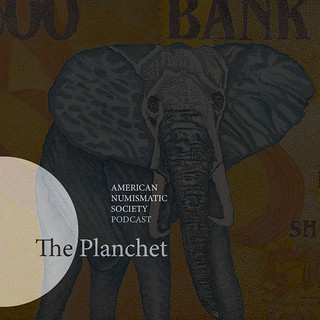 The fifth episode of The Planchet features an interview with guest Jenna Lash to discuss her numismatic paintings, how she selects her monetary subjects and themes, and what it's like to be a visual artist in the time of COVID-19.
The fifth episode of The Planchet features an interview with guest Jenna Lash to discuss her numismatic paintings, how she selects her monetary subjects and themes, and what it's like to be a visual artist in the time of COVID-19.
NOTE: The quality of the audio degrades for about a minute in the middle of the podcast, and then recovers for the duration of the recording. Occasional technical difficulties are the new normal until we get back safely to a shared space for recording.
Total Time: 38 minutes
The Planchet is available wherever you get your podcasts.
For more information, or to listen, see:
Ep. 05: An Interview with Numismatic Visual Artist Jenna Lash
(http://numismatics.org/planchet/01-05/)
ANTIGONID COINS ONLINE LAUNCHED
A recent blog post by Ethan Gruber announced the launch of Antigonid Coins Online at the American Numismatic Society. -Editor

ANS launches the first phase of Antigonid Coins Online
After soft-launching last week to give our partners (in the NUMiD consortium, particularly!) a chance to begin cataloging coinage, we are formally announcing the release of Antigonid Coins Online. The first phase of this project includes 182 types of Demetrius Poliorcetes from Edward T. Newell's The Coinages of Demetrius Poliorcetes (1927). We will, in time, introduce typologies for the remaining kings of this Successor dynasty.
At this juncture, it includes more than 300 coins from 11 collections, from both large and small museums. Currently, the handful of coins from the British Museum and Bibliotheque nationale de France are connected to typologies from PELLA that are the same coin type. Karsten Dahmen began cataloging Berlin's coins of Demetrius almost immediately, and a few German university museums soon followed. I updated my script for harvesting Newell references from Harvard Art Museums as well as added another dozen from MFA Boston into the master spreadsheet, which I also reprocessed from a script I had written early. The first coin of Demetrius harvested into Nomisma was actually from the Fralin Museum at the University of Virginia, since I still maintain that project. A further 200 or so were cataloged by Lauren Tomanelli, before she departed the ANS to pursue her archaeology PhD at the University of Arizona, and Peter van Alfen, who referred to the trays for those coins not yet photographed.
Additionally, Lauren drew 26 new monograms that are unique (thus far) to the coinage of Demetrius Poliorcetes, while also inserting URIs to monograms from PELLA and PCO into the types, when it is apparent they symbols are semantically identical. These coins now appear in the Hellenistic Royal Coinages union typology, and are available for comparative queries of measurements, geographic distribution, etc. The HRC project was funded by the National Endowment for the Humanities. Antigonid Coins Online was not part of the original set of deliverables for HRC, but as in many of our grant-funded projects, we always exceed expectations.
To read the complete article, see:
ANS launches the first phase of Antigonid Coins Online
(http://numishare.blogspot.com/2020/07/ans-launches-first-phase-of-antigonid.html)
To visit Antigonid Coins Online, see:
http://numismatics.org/agco/
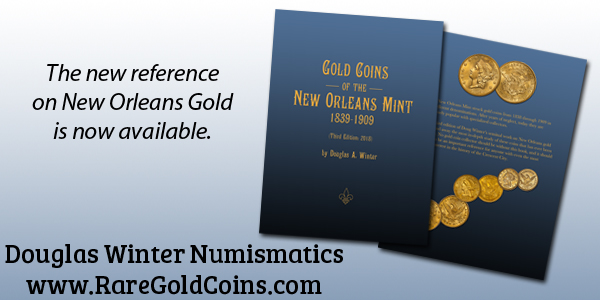
NOTES FROM E-SYLUM READERS: AUGUST 2, 2020
Update: Coin Collecting Albums Volume Three, Whitman Publishing
Author David Lange writes:
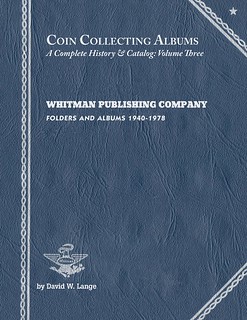 "My printer anticipates that Volume Three should ship to me August 12, which means I'll be able to begin filling orders about a week later. This is a delay of about three weeks and is likely attributable to the pandemic.
"My printer anticipates that Volume Three should ship to me August 12, which means I'll be able to begin filling orders about a week later. This is a delay of about three weeks and is likely attributable to the pandemic.
Advance sales have been quite satisfying, and the pre-order period is now closed. The publication price is $75 plus $7 for shipping."
See the earlier articles for ordering information (being mindful of the new price). This will be an interesting and popular book. Still LOVE that amazing cover! -Editor
To read the earlier E-Sylum articles, see:
NEW BOOK: COIN COLLECTING ALBUMS, VOLUME THREE
(https://www.coinbooks.org/v23/esylum_v23n25a03.html)
MORE ON COIN COLLECTING ALBUMS, VOLUME THREE
(https://www.coinbooks.org/v23/esylum_v23n26a08.html)
Mahendra Mishra Counterfeit Indian Banknotes
Joe Boling writes:
"In response to your question related to the Indian counterfeit notes printed by Mahendra Mishra, I have several King George V period counterfeit Indian notes, but who printed them is not known to me, and the single illustration in The E-Sylum is not nearly clear enough to link them."
Right - those are horrible photos. I'm hoping more information will turn up. -Editor
To read the earlier E-Sylum article, see:
INDIAN INDEPENDENCE BRITISH NOTE COUNTERFEITS
(https://www.coinbooks.org/v23/esylum_v23n30a28.html)
Mudlark Find: Brian Appleby's 1657 Maiden Head Tavern Token
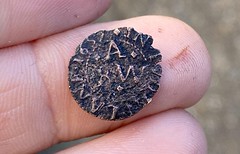
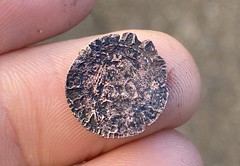
Peter Preston-Morley writes:
"Interested to note the find reported by your correspondent Anne Bentley in the latest E-Sylum. The token is a farthing issued at Pudding Lane, in the city of London, in 1657. The initials are those of Brian Appleby and his wife, W––. Appleby was the proprietor of the Maiden Head tavern (the device on one side of it) between 1656 and 1676. Appleby issued three series of tokens, of which this was the first."
Thank you! I didn't expect an attribution to come so quickly! Actually, it turns out that an attribution is on mudlark Nicola White's Twitter thread as well - I just hadn't clicked on the right link. Appleby's wife's name was Winnifrute. Thanks to Anne Bentley for setting me on the right path. -Editor
To read the complete thread, see:
https://twitter.com/TideLineArt/status/1284892616451129344
To read the earlier E-Sylum article, see:
NOTES FROM E-SYLUM READERS: JULY 26, 2020 : Trade Token Mudlark Find
(https://www.coinbooks.org/v23/esylum_v23n30a12.html)
1915 Alaska Dog Token: William Blackwell's ROWDY
Bob Rhue writes:
"Being the committed animal lover that I am, this 1915 Alaska Token with its high relief pictorial is particularly appealing to me.
It was issued by William Blackwell, a saloon owner in Valdez from 1907 to 1915. In 1915 a fire destroyed most of downtown Valdez and Rowdy was reportedly the only fatality. Blackwell clearly had a deep connection with his four-legged friend that he would issue this token in commemoration."
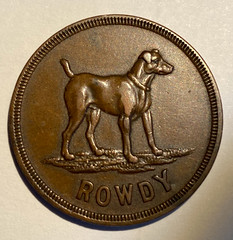
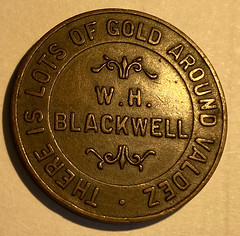
Yes, a nice piece. Thanks. -Editor
Pacific Coast Numismatic Society Videos
Michael Wehner of San Francisco writes:
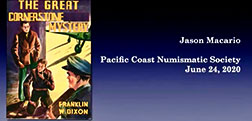 "The Pacific Coast Numismatic Society has been holding its monthly meetings via zoom during the pandemic and recording the presentations for YouTube. There are 3 video presentations so far, two on the 2nd Mint at San Francisco and one on trade tokens (If interested in the mint, I suggest watching Jason's first, followed by Paul's). Follow this link:
"The Pacific Coast Numismatic Society has been holding its monthly meetings via zoom during the pandemic and recording the presentations for YouTube. There are 3 video presentations so far, two on the 2nd Mint at San Francisco and one on trade tokens (If interested in the mint, I suggest watching Jason's first, followed by Paul's). Follow this link:
http://pcns.org/videos/index.html
"
More on Bernth Ahlstrom
Regarding our earlier questions about the spelling of the name of dealer and auctioneer Bernth Ahlstrom,
Ingrid O'Neil writes:
"The spelling in his passport was Bernth. His last name was Ahlström with 2 dots on the "o", so he usually spelled his name Ahlstroem, the "oe" standing in for the o with 2 dots."
Thank you! -Editor
To read the earlier E-Sylum article, see:
BERNTH AHLSTROM (1936-2019)
(https://www.coinbooks.org/v23/esylum_v23n15a11.html)
Liberty Half Walking Stick
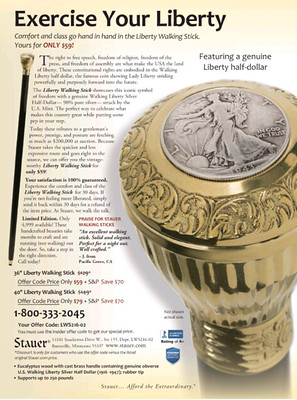 Nick Graver writes:
Nick Graver writes:
"Our local weekly newspaper features a large ad for a walking stick with decorative knob handles featuring a Walking Liberty half. "Exercise Your Liberty" is the headline."
I found the product online, and Nick confirmed it the same one advertised. A decent-looking product, actually. If you can use one of these, get one to brandish at non-social-distancing young whippersnappers on your next outing. -Editor
For product information, see:
Exercise Your Liberty
(https://www.pressreader.com/usa/smithsonian-magazine/20200301/281788516049586)
Liberty Walking Stick 36"
(https://www.stauer.com/item/38956/114202309/liberty-walking-stick-36)
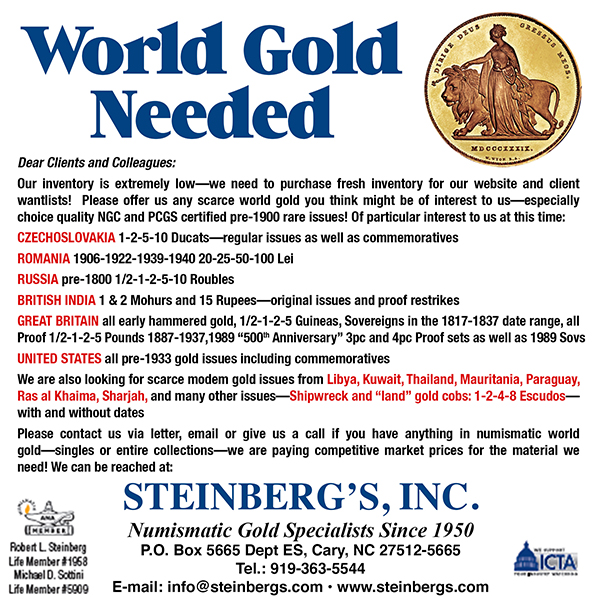
VOCABULARY TERM: UPSETTING
Dick Johnson submitted this upsetting entry from his Encyclopedia of Coin and Medal Terminology. Thanks! -Editor
Upsetting. The process of pre-forming the edges of round blanks prior to striking. Upsetting is a metalworking step necessary for coining pieces with dies and a collar, particularly intended for high speed coining presses. Blanking usually leaves sharp edges, shear marks and burrs on the metal disks as they come from the blanking press.
The upsetting process – called rimming in England and the machine is a rimmer – removes these burrs, marks and helps form better edges on the struck coin. (It is also called by the confusing term edge marking as well.)
By pressure and rolling, the upsetting machine accomplishes the following: (1) removes the burrs and smooths the edge, (2) rounds the edge, (3) makes the blanks perfectly round, (4) thickens the edges for the raised border – edge thickening is a typical metalworking process – (5) makes every blank a uniform diameter, usually several thousands of an inch less that the aperture in the collar to be used in the press, and (6) reduces die wear.
Upsetting does not form the reeding on the edge – this is done by the collar – but it does prepare the blank so it can enter the collar aperture. By pre-forming the blank, up- setting's greatest contribution to coining is to reduce jams in the coining press, reduce the amount of metal displaced during coining, and with the thickened edge, helps form the rim which lessens wear on the coin design during circulation.
Collectors call the blank as it comes from the blanking press a type one or FIRST PROCESS BLANK; after it is upset and exhibits an upset rim it is a type two or SECOND PROCESS planchet. Both steps, of course, are necessary to create a coin planchet prior to the piece being fed into a coining press. Upsetting is mandatory for any high speed coining operations, and it can only be performed on blanks that are round. Thus upsetting is not necessary for medal striking for several reasons: the speed is slower, most medals are hand fed, struck with open face dies and not collar dies, plus some medals are struck on blanks of UNUSUAL SHAPE.
Upsetting helps reduce coining anomalies such as a FIN (caused by improper size blanks or coining pressure). Also in production run pieces upsetting provides a rounding at the RIM/EDGE JUNCTURE (from the rounded edge of the blank). angle[RWB1] .
Although the use of the coining techniques of the aperture collar and upset blanks had been published in mint literature during the early 1800s, these processes were considered as closely guarded trade secrets at many national mints. Nineteenth century mint personnel were pledged not to reveal any facts about these techniques (presumably to prevent counterfeiting). The penalty was to have a hand chopped off.
History of upsetting. The first concept of edge thickening came about when mint workers tried to treat blanks with edge lettering on a blank before it was struck. Pierre Blondeau was the first to do this in France, but he was enticed to come to London in 1649. He struck his first coins from upset blanks there in 1651. His primitive method was improved by Jean Castaing back in France in 1685. Both methods were similar in that they forced the blank between two grooved bars, one fixed and one that moved back and forth (by rack and pinion action).
Blanks were edge thickened by this rack and pinion method to the end of the 1700s. It was Matthew Boulton who improved the process of upsetting between 1788 and 1797 at his Soho Mint in Birmingham.
Boulton devised a way to force round blanks between a rotating grooved disk with a fixed bar in the shape of an arc also with a grove. He mechanized his rimming machine with this rotating disk and powered it by his steam engines. His large cartwheel penny of 1797 could not have been struck without first pre-forming the blanks by upsetting (what he called "rimming").
Ralph Heaton, founder of the Heaton Mint in Birmingham, obtained Boulton's rimming machine and modified it slightly. He manufactured these riming machines and sold them to mints around the world through his company, Ralph Heaton & Sons. In 1859 the firm patented a method of feeding blanks into their rimming machine to speed up the process.
Other rimming machines were made and sold to mints by Taylor and Challen, a mint equipment company also of Birmingham. This firm was in competition with Heaton.
But a dramatic advancement in upsetting machines came in 1860 when a mechanic working in the Royal Mint, London, Meredith Jones, developed a different method of rimming, with the grove on the face of the rotating disk. His rimmer was called the "Jones Marking Machine" and could be easily altered for different diameter blanks.
References:
C66 {1988} Cooper pp [early] 101-106, [modern] 193-199, 241.
Looking for the meaning of a numismatic word, or the description of a term? Try the Newman Numismatic Portal's Numismatic Dictionary at: https://nnp.wustl.edu/library/dictionary
Or if you would like a printed copy of the complete Encyclopedia, it is available. There are 1,854 terms, on 678 pages, in The Encyclopedia of Coin and Medal Technology. Even running two a week would require more than 19 years to publish them all. If you would like an advance draft of this vital reference work it may be obtained from the author for your check of $50 sent postpaid. Dick Johnson, 139 Thompson Drive, Torrington, CT 06790.

WILLIAM POILLON (1844-1918)
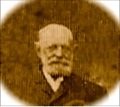 Poillon, William (1844-1918), Office : 61 Bethune Street, New York; 1st Residence : 425 West End Avenue, New York, New York; 2nd Residence : 301 West 106th Street, New York City.
Poillon, William (1844-1918), Office : 61 Bethune Street, New York; 1st Residence : 425 West End Avenue, New York, New York; 2nd Residence : 301 West 106th Street, New York City.
He was born the eldest of seven children of a Dutch family on August 1, 1844, in New York City, son of Cornelius Corson Poillon (1815-1881) and Julia Mariann Corbet (1821-). He married Clara Wilson (1851-1892), and they had three children : William Clark Poillon (1872-1947), Harry Cornelius Poillon (1874-1950), and Julia Aline Poillon (1877-).
His family lineage extends back to 17th century New York beginning with Jacques Poillon (1675-1733), a Huguenot, who was born in Flatbush, Long Island, New York. The family owned large real estate holding in Brooklyn and other locations in New York and they also owned one of the largest shipyards in New York and engaged in shipbuilding.
He served as a Corporal in the Fourth “D” Company, Seventh Regiment, National Guard, State of New York.
In 1867, he purchased the Salamander Works, Rahway Avenue, Woodbridge, New Jersey, a clay manufactory established circa 1825. In 1871, he incorporated the pottery. The early pottery production was limited entirely to artware. In 1890, his teenage son Harry Cornelius Poillon, became the President of the Salamander Works. In 1896, a devastating fire destroyed the factory. Five years later, his daughters-in-law revived the factory in 1901.
Being a descendant of an Early American Colonial family led him to pursue active involvement with study and collecting interests of that period of history. As a result we find that on November 25, 1874 he was elected a Life Member of the New York Genealogical and Biographical Society, and produced six genealogical and biographical pamphlets for them. He was also a member of the St. Nicholas Society, organized to study and conserve the history of New York's Dutch ancestry, since membership is by invitation only exclusively to persons whose families lived in New York prior to 1785. In the same way he became a member also of Holland Society, The Huguenot Society, and Society of Colonial Wars, for which he published articles.
After the death of his wife Clara in 1892 and his term as ANS Vice-President he moved to Chicago embarking on a business venture, which caused him severe losses and bankruptcy.
He returned to New York “a broken man” struggling through his remaining years. He died while an incumbent member of the ANS Council at his residence 301 West 106th Street, New York City, on April 12, 1918.
Numismatic Career :
He was involved in five auction sales of his coins, library and collectibles during his lifetime. His estate held six additional sales posthumously.
He collected medals associated with the American Revolution and Masonry. His interest in medals brought him into friendship with Charles De Kay, who presented him with a copy of his 1910 book, A Brief Word on Medals.
He was an ANS Life member since November 11, 1869. He was very active in the ANS and served as the Secretary 1878-1885; Vice-President 1886-1893; Historiographer 1897-1900; Curator 1906-1909.
In 1875, he was a subscriber to Sylvester Sage Crosby, The Early Coins of America. In 1876, E. J. Attinelli credits him in the Preface to Numisgraphics, calling him William Poillon, Jr., probably in jest to his rather large stature. He was a donor, in 1878, to the ANS library. He also established one of the ANS Permanent Funds. From 1879 to 1880 he assisted William T. R. Marvin in the production of The Medals of the Masonic Fraternity Described and Illustrated. In 1908, he produced for the ANS, Catalogue of the Collection of Gold Coins in the Cabinet of the American Numismatic Society.
He became a corresponding member of the Western Pennsylvania Numismatic Society in 1880.
He applied to the ANA in July 1902 and is member no. 422. He is in a photograph taken at the ANA Montreal Convention in 1909 illustrated here in the above Fig. 1.
His unbridled enthusiasm for collecting Masonic medals made him easy prey and victim to many dealers who profited from his naïve credence and numismatic ignorance in this specialized area since no guidebook or reliable reference was available to him.
To read the complete article, see:
POILLON, WILLIAM
(http://www.numismaticmall.com/numismaticmall-com/poillon-william)
THE BOOK BAZARRE
HARVEY STACK'S NUMISMATIC FAMILY, PART 75
The latest article in Harvey Stack's blog series is about collector Harold Bareford. Thanks. -Editor
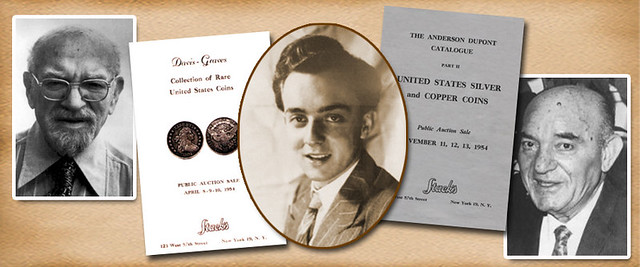
In December of 1978, several months after Harold S. Bareford passed away, his family asked us to offer for sale the first part of his famous collection, some 242 outstanding items. I had known Harold since he came home from the Navy during World War II. From the first time I met Harold, I learned that he was trying to get the best that was available, not necessarily trying to finish a series but rather have beautiful and rare coins he could study and admire for their quality.
Harold Bareford was a close friend of the entire Stack family. His office was close to the Stack's retail store on 46th Street, so on many weekdays he would stop over during his lunch period to visit and chat. Every time he came in he would inquire, "You guys got anything for me to see?" We would, of course, show him our newest acquisitions and give him an "early bird" view of collections we were preparing for sale. He had a wonderful eye for quality, and when he saw something that he thought qualified as "among the best," he would buy it.
He liked early American silver and copper coins, and he would often debate with Dr. Sheldon, another frequent visitor to Stack's, that some of his coppers were nicer than those shown in Sheldon's book. After much discussion, sometimes Dr. Sheldon would agree that Harold's piece was finer or more beautiful and should be at the top of the list! Harold would have these same discussions with other specialists in the various United States coin series. Norman and I loved working with Harold, and enjoyed his appreciation for sharpness and eye appeal. We both learned many new things during Harold's visits, as we did from many of the experts who visited. They were always willing to teach us and we were very appreciative.
Harold spent time reading catalogs to determine what was "next" on his list. He was always sorry that he was away in military service and missed the time when Stack's had the Col. E.H.R. Green coins in inventory. However, we sold the $5 and $10 sets to King Farouk. Mr. Bareford was able to eventually acquire some of these pieces – I list some of these below. Members of the Stack family did not attend the 1954 Farouk Sale due to commitments to sell two important collections that year. However, Harold relied on Abe Kosoff who was in Cairo at the sale to confirm the quality of the coins he wanted and bid on them for him.
Harold was a great numismatist and dedicated to the growth of the hobby. He served on many boards of local coin clubs in New York and New Jersey, and was for many years the president and toastmaster at the Greater New York Numismatic Conventions. He left a legacy that will last forever.
A few of Harold Bareford's gold coins that were featured in our December 1978 auction included: $1 gold: 1855, 1875 Proof. $2.50 gold: 1836 Gem Uncirculated, 1848 CAL, 1875 Brilliant Proof. $5 gold: 1795 Large Eagle, Brilliant Gem Uncirculated, ex Farouk; 1823 Gem Uncirculated, ex 1947 ANA auction, 1874, 1875 Brilliant Proof, both ex. Farouk. $10 gold: 1862 Brilliant Proof, ex Davis Graves; 1933 Gem Uncirculated.
The Bareford Collection is an important pedigree whenever any of his superb coins are sold even now. I know, from the family, that Harold favored Stack's and left in his will that Stack's should be the auctioneer when his collection was sold. We will always be grateful for that vote of confidence.
For professional numismatists like me, developing relationships like we had with Harold Bareford, was among the things we were taught by our seniors. We had the privilege of knowing these great numismatists, serving them whenever we could, and learning from them what they knew. Serving clients and building long-term relationships was the best way to have a successful coin dealership and Stack's was always pleased when our clients chose us when they were ready to bring their collections to auction.
To read the complete article, see:
Harvey Stack Remembers: Growing up in a Numismatic Family, Part 75
(https://www.stacksbowers.com/News/Pages/Blogs.aspx?ArticleID=Harvey-Stack-Remembers-Part-75)
To read the complete article, see:
HARVEY STACK'S NUMISMATIC FAMILY, PART 74
(https://www.coinbooks.org/v23/esylum_v23n29a19.html)
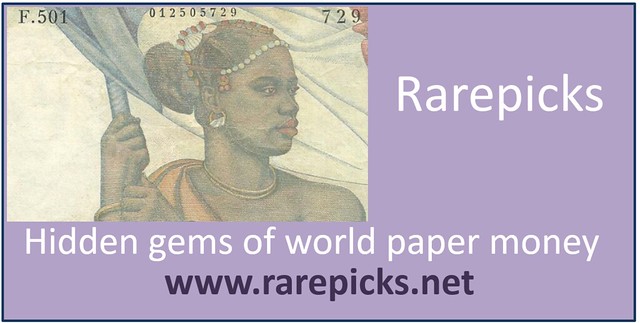
THE GREAT DU PONT COIN ROBBERY
Earlier this month Mike Garofalo published a great article on the PCGS site about the famous du Pont coin robbery of 1967. Here's a short excerpt, but be sure to read the complete version online. -Editor
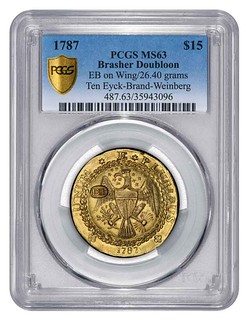 It was the home of Mr. and Mrs. Willis H. du Pont, former head of General Motors and E. I. du Pont de Nemours and Company, the chemical giant. Willis was the youngest of 10 children and had left the family's homeland of Delaware for the relaxing sunshine of Florida. He had married a Spanish model, Miren de Amezola de Balboa, and they had two children, Victor, age four at the time of the robbery, and his baby brother Lammot, then just one.
It was the home of Mr. and Mrs. Willis H. du Pont, former head of General Motors and E. I. du Pont de Nemours and Company, the chemical giant. Willis was the youngest of 10 children and had left the family's homeland of Delaware for the relaxing sunshine of Florida. He had married a Spanish model, Miren de Amezola de Balboa, and they had two children, Victor, age four at the time of the robbery, and his baby brother Lammot, then just one.
Many of his neighbors had private security guards watching over them and their property. Willis du Pont felt that the technology of the day would better serve to protect his family. His home was protected by a state-of-the-art alarm system and a network of closed-circuit cameras. Never fully comfortable with being in the public eye due to his wealth and fame, du Pont at least felt protected here.
Shortly after midnight, Willis and Miren were awakened by the sound of their bedroom door exploding open. The lights came on and in came the five masked strangers with their guns drawn. One of the robbers yelled, “We want your money. Tell us where it is!” As scary as that must have been, at least they were looking only for money – not to hurt or kidnap the family; money was something Willis could easily surrender.
The gang had rounded up young Victor from his room as well as the maid and butler, still on duty there, leaving the baby, Lammot, asleep in his crib, and brought them all into Willis and Miren's bedroom. Two robbers stayed in the bedroom, forcing Miren to open the small bedroom safe. At one point, Miren panicked and couldn't remember the combination, only to have a gun shoved into her face. Meanwhile, Willis was escorted downstairs.
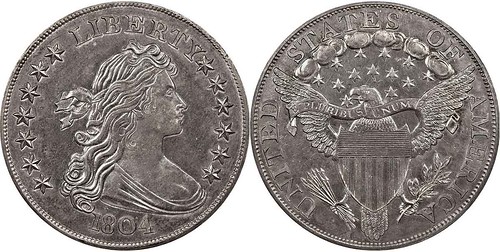
Linderman Specimen of 1804 Silver Dollar
In the bedroom safe were some $50,000 in cash and family jewelry, which would not have been a terrible haul on its own. But downstairs was a game-changer! Willis was forced to show them the walk-in safe next to his study. While the robbers were looking for more cash, inside the walk-in safe was one of the most impressive and valuable private coin collections in the country. The robbers realized that this was the haul of their dreams.
The robbers secured six suitcases from the du Pont attic and filled them with books and boxes full of rare coins, gold and silver pieces, and more than 1,000 silver dollars. After packing all of their loot, the family, the maid, and butler were tied up using a number of Willis's silk ties. The stolen car that had brought them to the du Pont home was abandoned, and they used Miren's brand new red Cadillac convertible to make their getaway.
The Haul
Stolen were approximately 7,000 coins in total. Some 250 Russian Ruble coins from the famed Mikhailovich collection were taken along with more than 1,000 United States silver dollars. But all of that paled against the value in the handful of great American rare coins that Willis owned. His rarities were legendary in that he owned the collection of 13 private and territorial United States gold coins that were some of the finest known, two specimens of the legendary 1804 Draped Bust Dollar, and the famous trio of coins including the 1866 No Motto Seated Liberty Quarter, Half Dollar, and Dollar – all thought to be unique. Another major rarity stolen was the finest-known 1787 Brasher Doubloon.
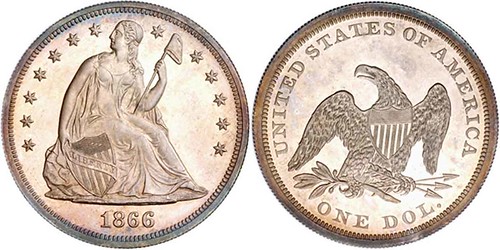
1866 Liberty Seated Dollar, No Motto
Also stolen were more than $4,000 in cash and nearly $50,000 in family jewelry. This was an amazing haul for this inexperienced group of hoodlums. The estimated value of all items stolen easily exceeds $10 million today. While the local and state police ran the investigation, du Pont hired his own investigators headed by Harold Gray, a du Pont family attorney who traveled the globe trying to recover many of the coins that were stolen that evening. Gray was on the case until 2011, when he passed on at age 85, but not without having had some successful recoveries of a number of important coins.
Many coins were recovered over the years including top headline pieces thanks to the good work of numismatists including Tom DeLorey, John Kraljevich, John Pack and Kevin Lipton. Always be vigilant! -Editor
To read the complete article, see:
The Great du Pont Coin Robbery and Recovery
(https://www.pcgs.com/news/great-du-pont-coin-robbery-and-recovery)

ROYAL CANADIAN MINT HONORS ARTIST BILL REID
The Royal Canadian Mint released a new $2 coin featuring the work of British Columbia artist Bill Reid. -Editor
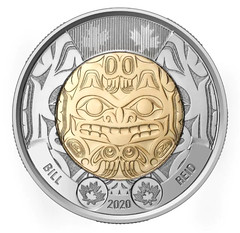 The Royal Canadian Mint has launched a new toonie to commemorate the legacy of Haida artist Bill Reid, more than 20 years after his death.
The Royal Canadian Mint has launched a new toonie to commemorate the legacy of Haida artist Bill Reid, more than 20 years after his death.
The new $2 coin, which marks 100 years since Reid's birth, enters circulation Tuesday.
"The mint is delighted to add the story of Bill Reid's pivotal role in raising awareness of Haida art, and the traditions and culture it represents to the long list of circulation coins celebrating what makes us proud to be Canadian," said Marie Lemay, president and CEO of the Royal Canadian Mint in a written statement.
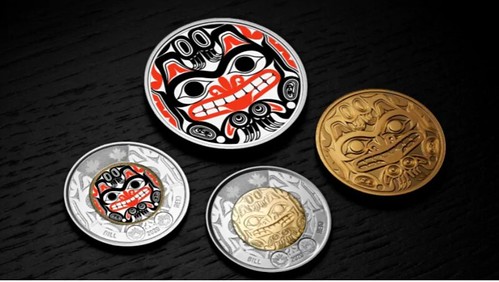
Reid's work is widely acknowledged for helping to bring global recognition and respect to Northwest Coast art.
Born in Victoria, B.C., in 1920 to a Haida mother and American father with Scottish-German roots, he began exploring his Haida heritage in his early 20s. Reid eventually became renowned for his detailed carvings, like Raven and the First Men — a cedar sculpture at the UBC Museum of Anthropology.
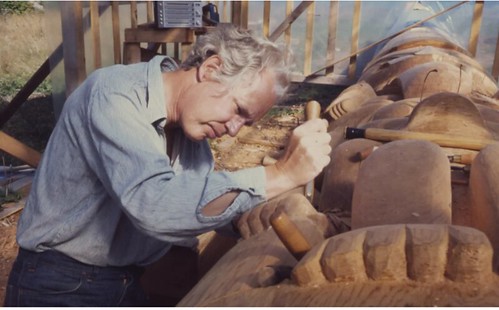
He died in 1998 after battling Parkinson's disease.
The artwork appearing on the toonie honouring his legacy is known as Xhuwaji, Haida Grizzly Bear. Reid painted it in 1988 on a ceremonial drum belonging to the Sam family of Ahousat, B.C.
To read the complete article, see:
New toonie features work of Haida artist Bill Reid
(https://www.cbc.ca/news/canada/british-columbia/royal-canadian-mint-bill-reid-toonie-1.5666371)
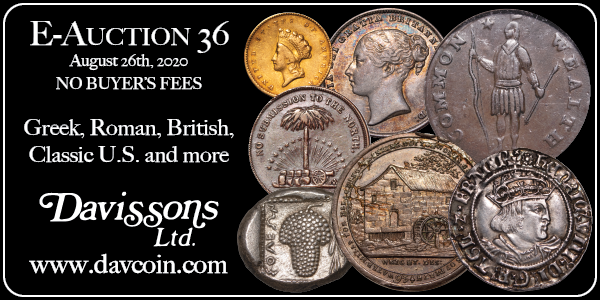
ROBINSON ANCIENT COIN SALE 113 ANNOUNCED
Here's the press release for Frank Robinson's upcoming sale of ancient and early coins. -Editor
FRANK ROBINSON SPECIAL AUCTION: SELECTIONS FROM HIS PERSONAL COLLECTION. Dealer Frank S. Robinson will conduct his 113th mail and internet auction of Ancient and Early Coins with a closing date of September 1. The sale will include 448 lots, with low minimum bids, and bids to be reduced as competition permits. Robinson notes that reductions have averaged 15-20% in his recent sales. There is no buyer fee.
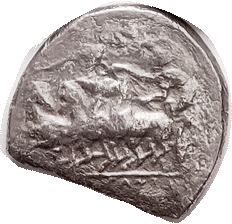
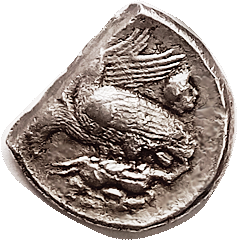
Lot 4: AKRAGAS Tetradrachm cut to Tridrachm
This is a special sale featuring, in part, selections from Robinson's personal collection of Greek and Roman coins. Calling himself a “condition snob,” he had always resolved to keep for himself “only really good stuff.” But after nearly half a century, accumulating thousands of coins, it is time to “decimate” the collection. In Roman times that meant executing every tenth man. Robinson says he similarly picked out about one coin in ten — forcing himself to make choices.
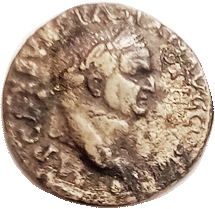
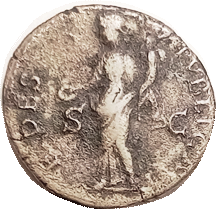
Lot 206: Dupondius of Vespasian struck over a coin of Otho
 Many, he notes are rare and unusual. As one example, he notes a Dupondius of Vespasian struck over a coin of Otho, with Otho's name visible. The tranche of coins from his collection will be distributed over three sales.
Many, he notes are rare and unusual. As one example, he notes a Dupondius of Vespasian struck over a coin of Otho, with Otho's name visible. The tranche of coins from his collection will be distributed over three sales.
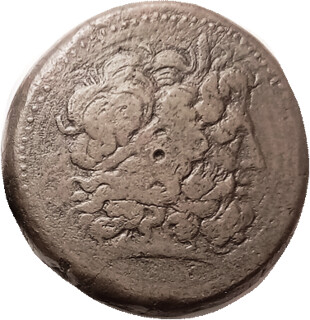
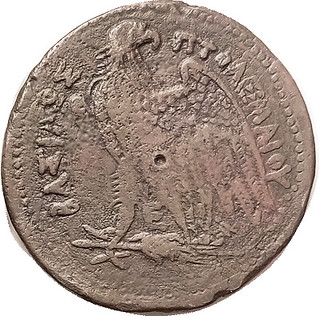
Lot 28: EGYPT Ptolemy II Bronze
The auction also includes Byzantine and other early coinages, group lots, literature, and a section of items offered at fixed prices
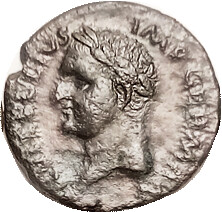
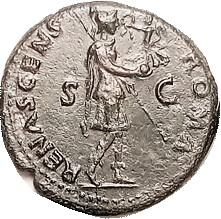
Lot 204: VITELLIUS As
Robinson holds about three auctions annually, and tries to offer a broad range of material for advanced collectors as well as bargain hunters. Catalogs are free; contact Robinson at Box 8600A, Albany, NY 12208; phone/fax 518-482-2639; e-mail frank@fsrcoin.com. The full catalog is at his website, www.fsrcoin.com.

STACK'S BOWERS GALLERIES AUGUST 2020 AUCTION
Here's the official press release featuring highlights from the upcoming Stack's Bowers Galleries August 2020 sales. -Editor
Stack's Bowers Galleries August 2020 Las Vegas Auction
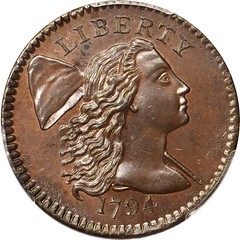
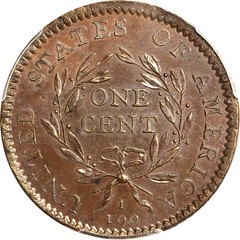
1794 Liberty Cap Cent. S-64
Stack's Bowers Galleries is thrilled to present several important collections of United States coins and Numismatic Americana in their August 2020 Las Vegas Auction. The sale will be held August 5-7 at the Bellagio Hotel and Casino alongside the PCGS Members Only Show, with additional Internet Only sessions to be hosted on the Stack's Bowers Galleries website August 10-12.
United States coins first cross the auction block in Session 2 on Thursday, August 6 at 2:00 PM PT, with Rarities Night featuring the ESM and Fairmont Collections. The ESM Collection of Large Cents is among the standout offerings of the sale, and combines high grade and extreme rarity. Virtually complete by Guide Book variety, the ESM Collection showcases the finest known 1793 Strawberry Leaf cent (lot 1006), in addition to many Condition Census examples like the CC#1 1794 S-64 cent graded MS-65 BN (PCGS) CAC (lot 1011). Collectors of U.S. gold will be drawn to Liberty and Indian half eagles from the Fairmont Collection, highlighted by MS-61 (PCGS) examples of the 1909-O (lot 1542) and the 1929 (lot 1559).
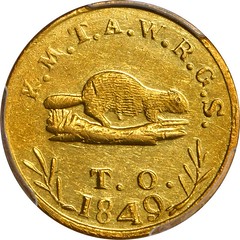
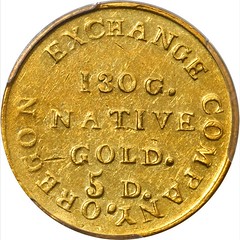
1849 Oregon Exchange Company $5. K-1
Over $1.2 million in territorial and shipwreck gold features such rarities as a MS-64 (PCGS) CAC 1851 Humbert $50 (lot 1320), a MS-62 (PCGS) 1849 Oregon “Beaver” $5 (lot 1326), and two gold ingots from Harris, Marchand and Co. recovered from the S.S. Central America (lots 1329 and 1330). Other standout treasures from Rarities Night include the finest known 1883-S Morgan dollar with provenance to the Eliasberg Collection (lot 1230) and a MS-62 (NGC) example of the legendary 1796 Stars Obverse quarter eagle (lot 1248).
Bidding continues the following day with Session 3, beginning at 9:00 AM PT on Friday, August 7. The session opens with a significant offering of Numismatic Americana highlighted by the D. Brent Pogue Numismatic Library. This selection from the Pogue Library numbers more than 100 lots ranging from a bound volume of iconic Chapman sales (lot 2060) to rare references like a presentation copy of A.W. Browning's work on early quarters (lot 2027). The Sherwood Collection of Civil War Tokens is another remarkable Americana offering, showcasing Condition Census quality and several Rarity-9 examples like a silver Fuld-142/349 f graded MS-63 (NGC) (lot 2215).
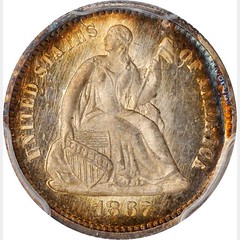
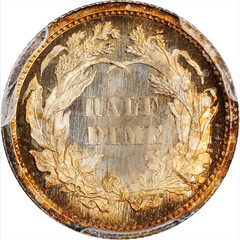
1867 Half Dime
The Numismatic Americana is followed by an impressive selection of U.S. coins that spans from colonial issues through modern commemoratives. Among these are Indian cents from the BSC Indians Set, highlighted by MS-66 RD (PCGS) examples of the 1873 Open 3 (lot 2331) and the 1909-S (lot 2369). Specialists will be delighted by the Henry Collection of Liberty Seated half dimes, offering such rarities as a MS-65 (PCGS) CAC 1842-O (lot 2544) and an 1867 graded MS-67 (PCGS) CAC (lot 2574).
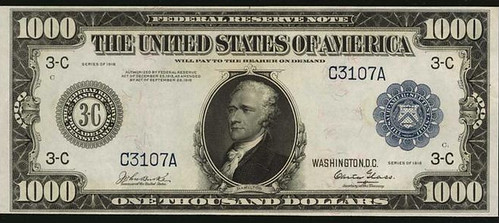
1918 $1000 Federal Reserve Note
Accompanying the U.S. Coins in the sale is an impressive array of U.S. Currency, showcasing some of the finest known $500 and $1000 Federal Reserve Notes from the Windy City Collection. Highlights include a PMG Gem Uncirculated 65EPQ 1918 $1,000 that ranks as the finest known (lot 188) and a PMG Gem Uncirculated 65 EPQ 1934 $5,000 that is one of just five graded at that level with none finer (lot 286).
Additional U.S. coins and Numismatic Americana will be offered in Internet Only Sessions 4 and 5, hosted on the Stack's Bowers Galleries website StacksBowers.com on Monday, August 10 and Tuesday, August 11, both beginning at 9:00 AM PT. Included in Session 4 are counterstamped coins from the Steve Tompkins Collection of Exonumia, Part I, offering a wide array of desirable stamps and rare host coins like the 1838 Reeded Edge half dollar stamped I.POST (lot 4271). On Wednesday, August 12 also starting at 9:00 AM PT additional U.S. currency will be featured in Internet Only Session 6.
Lot viewing for the Stack's Bowers Galleries August 2020 auction will be available, by appointment only, at the Grand Hyatt DFW, DFW Airport, Texas from July 31–August 2, and at the Bellagio Hotel in Las Vegas from August 5-7. The firm is committed to meeting local and federal safety restrictions and guidelines in place at the time of the sale and reiterates that the ongoing Covid-19 situation could result in location or other changes.
If you are unable to make it to lot viewing, the experts at Stack's Bowers Galleries will be on hand to review lots on your behalf and make sure that they are the perfect match for your collection. The firm is also offering robust phone bidding capacity for bidders who are unable to attend, in addition to online bidding on their award-wining website and mobile apps. Please email info@StacksBowers.com with questions on any lot or to register your phone bids. For further information or assistance in registering to bid, call 800-458-4646.
For more information, see:
https://www.stacksbowers.com/
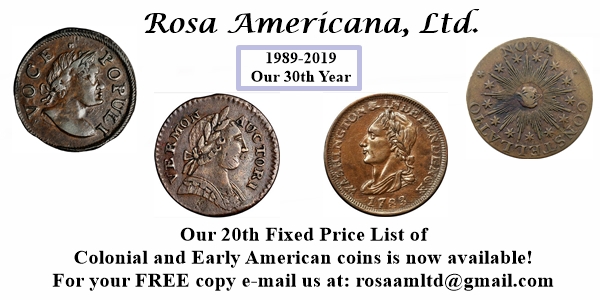
DAVISSONS ANNOUNCES E-AUCTION 36
Davisson's E-Auction 36 closes Wednesday, August 26th, 2020. Here's the firm's email announcement. I added some images from the sale. -Editor
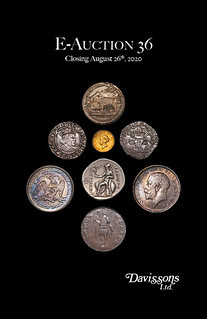 E-Auction 36, closing Wednesday, August 26th, is online now! Print copies were sent last week, if you are not on our mailing list and would like a copy please let us know.
E-Auction 36, closing Wednesday, August 26th, is online now! Print copies were sent last week, if you are not on our mailing list and would like a copy please let us know.
In a time when coin shows have disappeared it seems just right to offer a collection that was formed from coins bought at coin shows by a very serious collector. Freeman Craig Sr. was an Army Air Force navigator who flew 50 missions from North Africa into Italy during World War II. During the Depression his parents had a grocery-gas station-repair shop business and he was able to collect “Indian Pennies.” The war interrupted his life but when he came back, he took up collecting again.
His numismatic achievements and contributions make a long list. He was active at coin clubs, helped organize the Texas Numismatic Association, invested in a major coin firm, and formed collection concentrations from all over the world. His collection of 25 hammered coins covering English kings from Cnut to Henry VIII was one of those specializations. It looks to have been formed entirely by contacts at coin shows. The names of the dealers are familiar to all of us who were active coin show participants in the 1980s and 1990s. Charlie Wolfe in particular is legendary as a source for serious hammered.
Freeman had a good eye with an appreciation for portraiture, a decent sized flan, and an attractive tone on good metal. His family has consigned his collection and it anchors this sale.
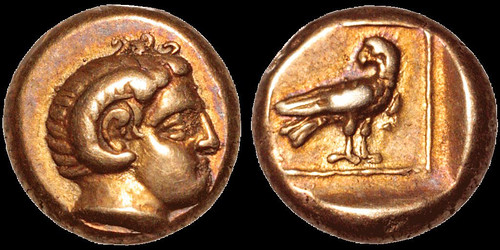
Lot 1: LESBOS. Mytilene. Circa 377-326 B.C. EL hekte.
GOLD has been bouncing around the $1800/ounce level lately, a dramatic gain when you remember that it puttered along in the $1300 range for the past five years. A regular consignor with us who has been responsible for some unusual and fascinating pieces has consigned a serious tranche of gold. You will find this—and some US Mint gold—after the Greek electrum issue and the Crusader ducat that open the sale.
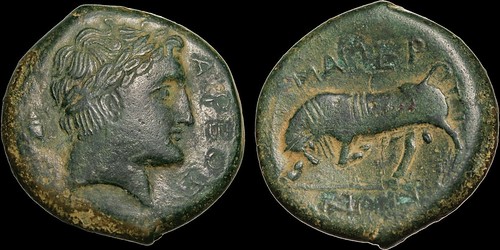
Lot 21: SICILY. Messana. The Mamertinoi. Circa 288-278 B.C. Æ quadruple unit.
Our ANCIENT section this time around is an interesting mix: Greek opens the gold section, with a lovely red-gold toned piece of electrum, then three nicely patinated better bronzes from Spain; eleven Greek silver pieces, mostly attractive stater size or larger, but with a couple litra-size also; and six more bronzes, picked for beauty of style and condition, including two fascinating pieces from the Campanian mercenaries in Sicily. A lovely section of eight of the finest British Museum electrotypes follows, then five Roman Republican denarii. Carefully selected affordable Roman colonial portraits include Augustus, Tiberius, Livia, and Claudius, followed by nineteen special imperial issues beginning with a beautiful Nero as. Three attractive Byzantine pieces include two high relief lead seals. An interesting Islamic section includes two notable Mongols issues, followed by a Crusaders section of six good pieces (see lot 2 as well).
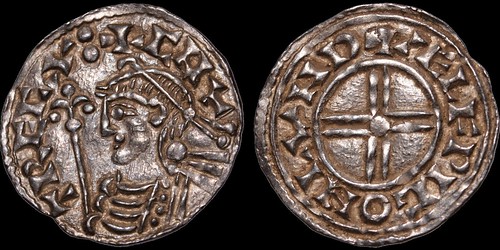
Lot 80: ANGLO-SAXON. Cnut. 1016-1035. AR penny
In addition to the Craig collection, the ENGLISH section continues with some high quality 20th century pieces from the Frank Robinson Collection. Then the Mike Sussman Collection of British Trade Tokens section covers later parts of Dalton and Hamer—Wales and Scotland.
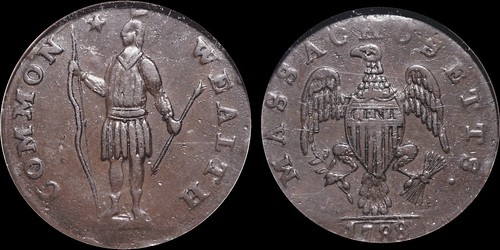
Lot 154: 1788 Massachusetts Cent
The UNITED STATES section continues with some affordable and interesting Colonial material, and some highly collectible though lightly used US type coins. Merchant tokens from a collection we have been handling offer a fascinating and moderate cost window into the Civil War era.
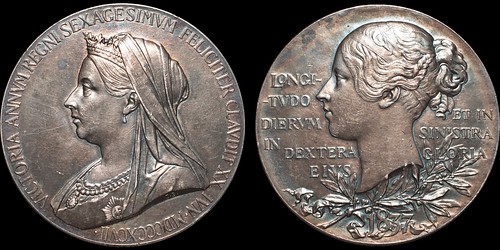
Lot 196: 1897 Victoria Diamond Jubilee Silver Medal
Finally, a few MEDALS including a massive medal for Victoria, a few American event issues, and, to close, a couple of mementoes of baseball over 100 years ago.
We have enjoyed putting all this together. Best regards from the three of us, and “stay well!”
Allan, Marnie, & Lief Davisson
For more information, see:
https://davcoin.com/
GEOFFREY BELL AUCTIONS AUGUST 2020 SALE
Geoffrey Bell Auctions is having an August sale as well. Here's the press release. -Editor
This year's Geoffrey Bell Auctions Ltd. Paris in August Sale is a little different; it's not in Paris. With the cancellation of the popular Paris Coin Show due to COVID-19, the firm will be conducting their auction from their home base of Moncton, New Brunswick. This format worked successfully with their Toronto Coin Expo Spring Sale, so the summer edition of the Paris auction has been tweaked just enough to add even better material while still offering something for every collector.
The Paris in August Sale 2020 will take place August, 8 at 5pm Eastern time with viewing available by appointment. You can bid in the comfort of your own home on the Internet, by phone, fax, email, mail, and live online.
There are many highlights. Gold has been in the news for quite some time now and bidders can expect a large selection of gold coins in the auction with more than fifteen countries represented.
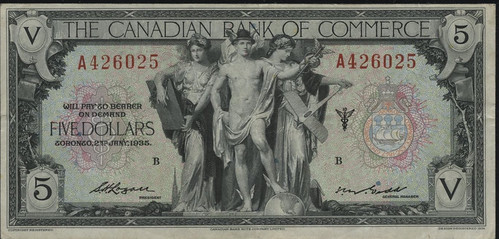
Lot 881: 1935 Canadian Bank of Commerce $5
Bank of Canada notes are strong with classics such as an attractive Princess Elizabeth $20 , a gem 1937 Osborne $10 , and a challenging transitional 1954 $1000 . The selection of chartered banknotes is equally pleasing with a scarce Wedd signature Canadian Bank of Commerce $5, 1935 , a rare Bank of Montreal $50, 1914 , and a pleasing, scarce Northern Crown Bank $5, 1908.
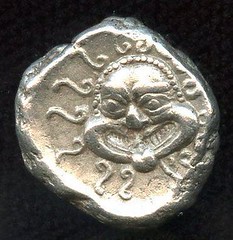 There are some sought-after Canadian decimal coins like the small crown 1906 25-cent piece and a 1936 25-cent dot variety, plus ancients, medals, tokens, and, of course, plenty of treasure chest-type lots for those that like to explore.
There are some sought-after Canadian decimal coins like the small crown 1906 25-cent piece and a 1936 25-cent dot variety, plus ancients, medals, tokens, and, of course, plenty of treasure chest-type lots for those that like to explore.
The Paris Sale auctions are always fun and this summer's edition promises the same.
For more information, or to bid, see:
http://gbellauctions.com/
http://auctions.gbellauctions.com/Paris-Summer-Sale-2020_as62602
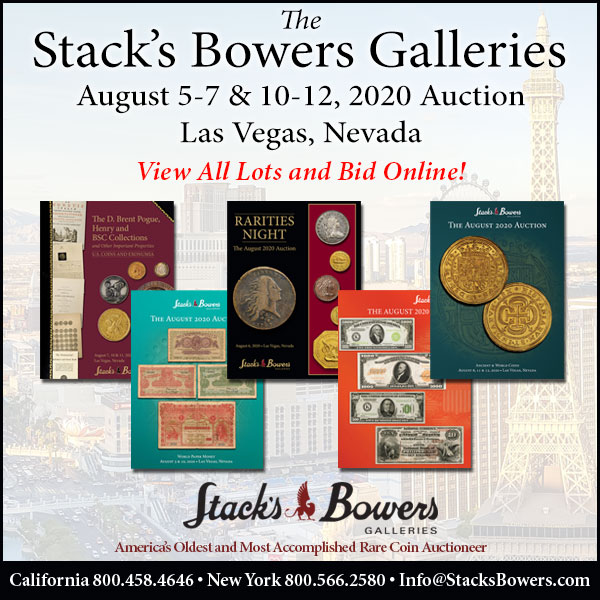
DIX NOONAN WEBB OCTOBER 2020 INDIAN SALE
Here is the press release for the fall Dix Noonan Webb sale of Indian coins and medals. -Editor
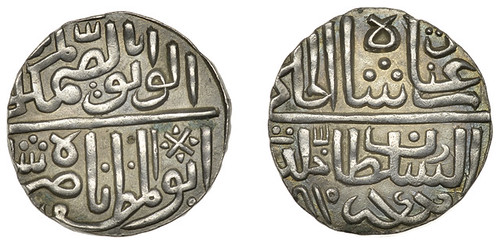
Tanka dating from 910 from the reign of Nasir Shah
The third and final part of a Collection of Coins of the Indian Sultanates will be offered by International coins, medals, banknotes and jewellery specialists Dix Noonan Webb in a live online auction of Indian Coins and Historical Medals on Wednesday, October 14, 2020 at 10am on their website www.DNW.co.uk.
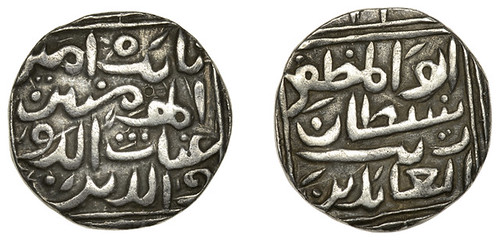
Tanka from the reign of Zayn al-‘Abidin
Among the highlights of the Collection, which comprises 284 lots in this particular sale, will be an extremely rare Tanka from the reign of the Bahmanid sultan Ghiyath al-din Tahmatan (799h) which is expected to fetch £2,000-£2,600; while an extremely fine and rare Nazarana Tanka of the Malwa sultan Nasir Shah (906-916h) is estimated at £1,200-£1,500, and a very fine and rare Tanka from the reign of the Kashmir sultan Zayn al-‘Abidin (823-874h) is expected to fetch £1,000-£1,200.
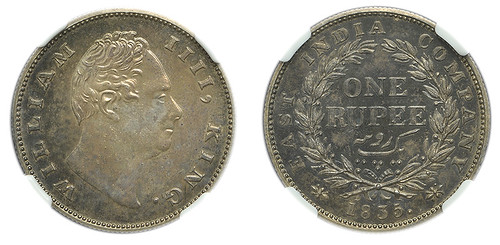
William IV Rupee
Expert in charge, Tim Wilkes, commented: “Following on from the success of last October's sale, which saw three coins from the Collection of Coins of the Indian Sultanates each fetch over £30,000, we are looking forward to this sale, which will attract interest from all over the world.”
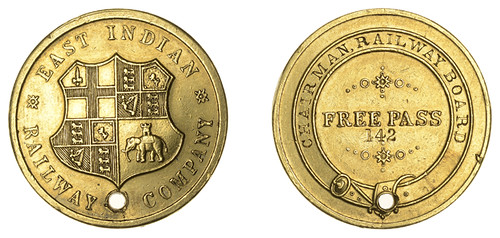
East Indian Railway Gold Pass
Also in the sale will be a collection of Rupees of British India; this collection comprises 67 lots and includes a restrike proof Rupee of William IV estimated at £1,500-1,800. A highlight of the small group of Indian historical medals is a gold ticket from the East Indian Railway Company estimated at £1,000-1,200.
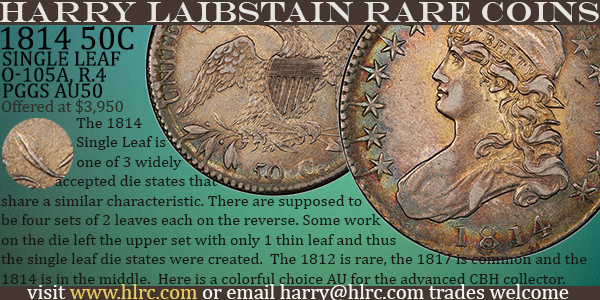
WAYNE'S NUMISMATIC DIARY: AUGUST 2, 2020
Last week I discussed a few items I've consigned to the upcoming Stacks Bowers August sales. I also had some U.S. pieces in their just-completed July 2020 Collectors Choice Online Auction.
1803 Draped Bust Cent
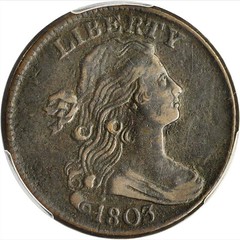
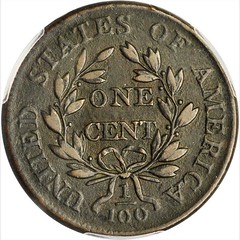
1803 Draped Bust Cent. Small Date, Large Fraction. VF Details--Environmental Damage (PCGS).
This was an early addition to my nascent U.S. type collection. If I'm remembering correctly, I bought this as a teenager, taking a bus into downtown Pittsburgh to visit the coin shops. I picked this up from an old-time dealer named Addison Smith, who had a small office on an upper floor of the Jenkins Arcade building (now demolished and replaced with an office building). This would have been in the 1970s. He looked to be about 80 years old. I picked out this VF Large Cent, paying about $20 at the time. -Editor
To read the complete lot description, see:
1803 Draped Bust Cent. Small Date, Large Fraction. VF Details--Environmental Damage (PCGS).
(https://auctions.stacksbowers.com/lots/view/3-NQX5S/1803-draped-bust-cent-small-date-large-fraction-vf-details-environmental-damage-pcgs)
1853 Braided Hair Cent
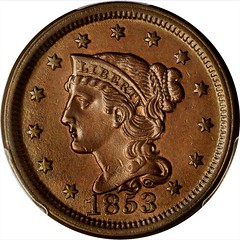
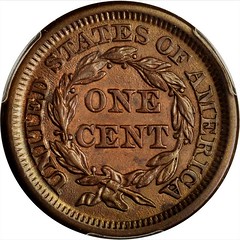
1853 Braided Hair Cent. AU Details--Cleaned (PCGS).
Another coin from my U.S. type collection. I forget where i bought this one. I never got too far with U.S. type. Once I learned about the fascinating numismatics of the U.S. Civil War, I put all my collecting focus there. -Editor
To read the complete lot description, see:
1853 Braided Hair Cent. AU Details--Cleaned (PCGS).
(https://auctions.stacksbowers.com/lots/view/3-NQX60/1853-braided-hair-cent-au-details-cleaned-pcgs)
1860 Liberty Seated Dime
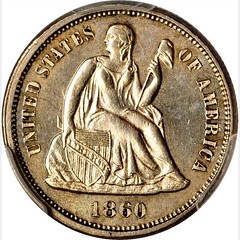
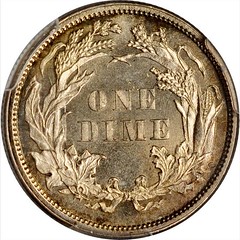
1860 Liberty Seated Dime. MS-63 (PCGS).
I bought this one years ago from an old local club member for my Civil War collection. I always focused on exonumia and Confederate issues rather than regular issue U.S. coins, so for me this was an outlier. Nice coin, though. -Editor
To read the complete lot description, see:
1860 Liberty Seated Dime. MS-63 (PCGS).
(https://auctions.stacksbowers.com/lots/view/3-NQX5W/1860-liberty-seated-dime-ms-63-pcgs)
Among my other consigned items in the upcoming sales are these. -Editor
1920 Chicago ANA Convention Medal
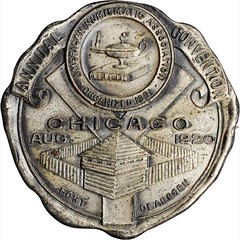
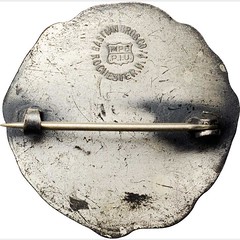
1920 Chicago, Illinois American Numismatic Association Convention Attendee's Medal. Silvered Brass. Extremely Fine.
40 mm. Obv: Depicts the American Numismatic Association Seal and a view of Fort Dearborn. Rev: Blank except for the maker's mark and a hinged pin and clasp.
No ANA convention this year? Reminisce about the one held a century ago in Chicago, IL. -Editor
To read the complete lot description, see:
1920 Chicago, Illinois American Numismatic Association Convention Attendee's Medal. Silvered Brass. Extremely Fine.
(https://auctions.stacksbowers.com/lots/view/3-NM4TK/1920-chicago-illinois-american-numismatic-association-convention-attendees-medal-silvered-brass-extremely-fine)
2004 Pittsburgh ANA Convention Medal Set
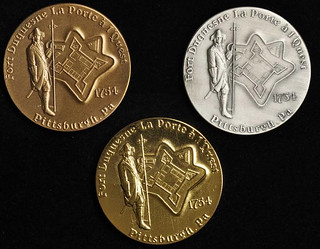
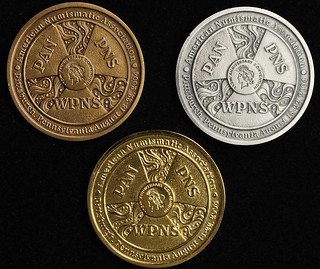
Three-Piece Set of 2004 Philadelphia, Pennsylvania American Numismatic Association 113th Convention Medals. Mint State.
38 mm, each medal numbered 7 on the edge. Included are: gold; silver; and bronze. The gold medal weighs 40.8 grams and is edge marked 10KT, the silver one edge marked .999 FS and weighs 33.6 grams, and the bronze example is simply marked BZ. Obv: Plan of old Fort Duquesne and a colonial era man holding a surveyor's staff. Rev: The date and location of the convention as well as the initials of the three local coin clubs that hosted the show. Housed in the original hinged case of issue, along with a Certificate of Authenticity signed by the designer of the medals, John M. Mercanti. (Total: 3 medals)
A more recent ANA convention. I was the General Chairman of this one (in Pittsburgh, not Philadelphia - don't believe everything you read). Great low-numbered set - the gold medals are rare. -Editor
To read the complete lot description, see:
Three-Piece Set of 2004 Philadelphia, Pennsylvania American Numismatic Association 113th Convention Medals. Mint State.
(https://auctions.stacksbowers.com/lots/view/3-NM4TE/three-piece-set-of-2004-philadelphia-pennsylvania-american-numismatic-association-113th-convention-medals-mint-state)
KUNKEL'S OPERA TROUPE Counterstamp
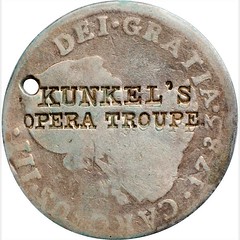
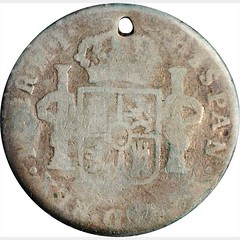
Maryland--Baltimore. KUNKEL'S / OPERA TROUPE on an 1783 Spanish-American 2 reales. Brunk K-347, Rulau MD-86A. Host Coin VG, holed, PVC Residue.
Provenance: From our (American Numismatic Rarities') Lake Michigan & Springdale Collections sale, June 2006, lot 867. Lot tag included.
Another classic piece from my U.S. merchant counterstamp collection. -Editor
To read the complete lot description, see:
Maryland--Baltimore. KUNKEL'S / OPERA TROUPE on an 1783 Spanish-American 2 reales. Brunk K-347, Rulau MD-86A. Host Coin VG, holed, PVC R...
(https://auctions.stacksbowers.com/lots/view/3-NM4UW/maryland-baltimore-kunkels-opera-troupe-on-an-1783-spanish-american-2-reales-brunk-k-347-rulau-md-86a-host-coin-vg-holed-pvc-r)
1959 Nation of Celestial Space 1 Gold Celeston
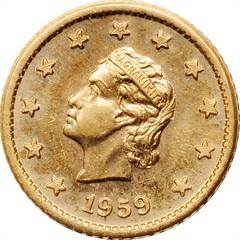
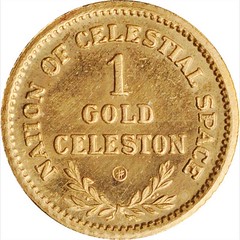
1959 Nation of Celestial Space 1 Gold Celeston. Bruce X-2. Gold. Mint State.
14 mm. 2.3 grams. .900 fine. The Nation of Celestial Space was chartered in 1948 by James T. Mangan of Evergreen Park, Illinois. The portrait is of his daughter Ruth Mangan.
An interesting micronation fantasy piece. -Editor
To read the complete lot description, see:
1959 Nation of Celestial Space 1 Gold Celeston. Bruce X-2. Gold. Mint State.
(https://auctions.stacksbowers.com/lots/view/3-NM4U5/1959-nation-of-celestial-space-1-gold-celeston-bruce-x-2-gold-mint-state)
If any of these strike your fancy, please be sure to bid. Proceeds will go to our kids' college tuition. Thanks! -Editor
To read the earlier E-Sylum article, see:
WAYNE'S NUMISMATIC DIARY: JULY 26, 2020 : Wayne Homren
(https://www.coinbooks.org/v23/esylum_v23n30a22.html)

STUDY DEBUNKS CULTURAL PROPERTY ALLEGATIONS
On July 30, 2020 Cultural Property News published an article highlighting a RAND Corporation report debunking earlier allegations about terrorist trade in antiquities. Here's an excerpt, but be sure to see the complete report online. Reports of such terrorist ties have damaged the legitimate trade in legally acquired coins and other antiques. -Editor
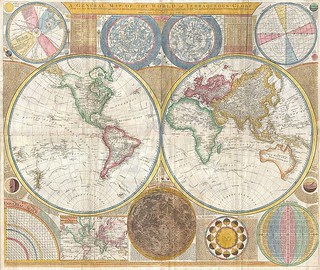 The most important story in the art world in the last decade illustrates how social influence, slick public relations, and steady repetition of false information can change the cultural policy of institutions, nations, even whole continents – even if the story is a lie. The lie is attractive, romantic, even heroic at times. There are times when the story is even partly true or just an oversimplification. There are bad apples and criminals in every occupation and the art world is certainly no exception. But the story is a lie all the same.
The most important story in the art world in the last decade illustrates how social influence, slick public relations, and steady repetition of false information can change the cultural policy of institutions, nations, even whole continents – even if the story is a lie. The lie is attractive, romantic, even heroic at times. There are times when the story is even partly true or just an oversimplification. There are bad apples and criminals in every occupation and the art world is certainly no exception. But the story is a lie all the same.
What is this false narrative? It is that the horrific cultural destruction in the world today and the looting of artistic heritage is driven by a handful of art dealers, collectors, and greedy museums. That respectable art dealers aren't respectable at all – they are working hand in hand with terrorists and well-organized criminal networks that loot to order for unscrupulous collectors in the United States and Europe.
This story has already severely damaged the legitimate trade in ancient art and artifacts, including coins. More importantly, it has changed Western political agendas and pushed legislation that will cause permanent harm to cultural institutions dependent on public support for a relatively free circulation of art. It has captured the imagination of hundreds of journalists and influenced the teaching of art history, anthropology, and archaeology to a generation of students. Most dangerously, it has forwarded the careers of dictatorial rulers who play the ‘cultural heritage card' to cloak human rights violations and even the deliberate destruction of cultural heritage by well-oiled authoritarian regimes in Egypt, Turkey, China, and elsewhere.
A major study by the RAND Corporation, Tracking and Disrupting the Illicit Antiquities Trade with Open Source Data, is the first major step in completely overturning current thinking on the size, geographical scope and participants in illicit looting and sales of antiquities. The RAND report was researched with the RAND Homeland Security Operational Analysis Center and partially funded through work for the US Department of Defense. The report shows that the conventional narrative promoted by many journalists and espoused by advocacy and archaeological organizations is dead wrong: the illicit antiquities trade is not a multi-billion-dollar enterprise operating through organized criminal networks, nor is it a significant source of revenue to terrorist organizations.
The stark difference between popular assumptions about the antiquities market and the data contained in the RAND report raises questions about how false narratives have driven legislation to regulate the art trade – and misdirected law enforcement activities attempting to curb illicit trafficking. The RAND report notes that different facts require new strategies to address the problem of illegal trade; a working cultural heritage policy must use more accurate data in order to disrupt looting and deter consumers from buying illicit goods.
The RAND report blames bloggers, journalists and advocacy groups for exaggerating – sometime ‘grossly exaggerating' – the problem to attract headlines, funding and to effect policy change.
To read the complete article, see:
RAND Corp Report Demolishes Assumptions on Antiquities and Terror
(https://culturalpropertynews.org/rand-corp-report-demolishes-assumptions-on-antiquities-and-terror/)

BBC ARTICLE ON LONDON'S MUDLARKS
DIck Hanscom passed along this great article about London's mudlarks, like Nicola White whose 17th-century trade token find was discussed last week and again elsewhere in this issue. Thanks! Here's an excerpt, but be sure to read the complete article online. -Editor
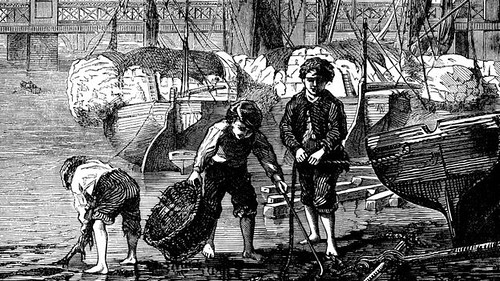
The name “mudlarks” originated in the Georgian and Victorian periods
One of the surprise best-selling books of 2019 was Mudlarking: Lost and Found on the River Thames by Lara Maiklem, who stumbled into mudlarking almost by accident. “One day I found myself at the top of one of the river stairs looking down onto the foreshore and I decided to go down,” she wrote. “For some reason, until then, I'd thought of the foreshore as a forbidden space, sometimes revealed, other times covered over with water. I found my first object that day, a short piece of clay pipe stem, and I was hooked.”
The Thames is one of the greatest and largest archaeological sites in the world, and the entire history of Britain can be told from items found on the foreshore. Many objects in the Museum of London have labels giving their provenance as “Discovered in the Thames”. Even a cursory glance at the river will reveal broken pottery pieces, shards of glass and twisted pieces of metal, and mudlarks have discovered everything from woolly mammoth teeth to Roman lamps to Tudor rings.
“The Thames is especially rich in small portable finds; it's not only their quantity but their quality that makes Thames finds so important. The preservation of lead, leather and bone artefacts is especially good, whether a Roman bone hair pin or a 17th-Century child's pewter toy. These artefacts are often lost on land sites due to adverse soil environments, but the anaerobic qualities of the Thames foreshore preserve them.”
However, mudlarking can be a risky hobby. When the tide turns, it turns fast. You must always be aware of your route off of the foreshore. The mud is another hazard: on one of my first mudlarking trips, a more experienced mudlark told me how he had once fallen into a pit left in the mud. He was lucky to have a bucket to claw his way out – though the Tube ride home was a little dirty.
But it's the mud of the Thames that makes mudlarking so rewarding. The layers of dirt contain artefacts from every stage of London's history and pre-history. Liz Anderson, a mudlark who runs a blog about her finds, once pulled a 2,000-year-old Roman nit comb from the mud. “The comb is made of boxwood and what I love about it is that it's almost exactly the same design as these things still are today,” she told me. “It also has mud between the teeth, in which almost certainly there may still lurk Roman nits. When I found it, it was in such good condition it looked like it had only been dropped yesterday.”
To read the complete article, see:
The Lost Treasures of London's Thames
(http://www.bbc.com/travel/story/20200729-the-lost-treasures-of-londons-river-thames)
To read earlier E-Sylum articles, see:
COINS FOUND MUDLARKING ON THE THAMES
(https://www.coinbooks.org/v23/esylum_v23n06a13.html)
MUDLARKING AND METAL DETECTING FINDS : Tallow Chandler Token
(https://www.coinbooks.org/v23/esylum_v23n13a25.html)
NOTES FROM E-SYLUM READERS: JULY 26, 2020 : Trade Token Mudlark Find
(https://www.coinbooks.org/v23/esylum_v23n30a12.html)

1848 CAL. QUARTER EAGLE COMMEMORATIVE
Heritage Auctions is offering a worn but more affordable example of my favorite U.S. commemorative coin, the 1848 CAL. quarter eagle. -Editor
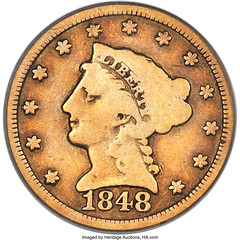
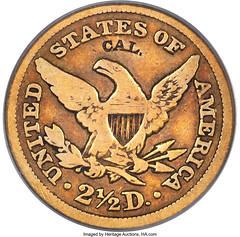
Collector-Friendly Example of America's First Commemorative Coin
When gold was first found at Sutter's Mill in California in 1848, optimistic hordes of people surged to this remote area of the West, hoping to strike it rich. When you think about how difficult transportation would have been--through little-known lands and with primitive roads with only the most basic of technology--the number of people who traveled to California to make their fortunes may be surprising. It is estimated that around 300,000 came to California between 1848 and 1855 and started digging.
With a new population of prospectors coming to town, San Francisco grew by leaps and bounds, and infrastructure improved to accommodate the new industries surrounding the gold rush. All of these changes ultimately led to the admission of California into the Union as a state in 1850.
Not only is the California Gold Rush a significant part of the United States' history for the general populace, but it is also of key importance for coin collectors. Some of the most beloved rarities today come from the territorial gold genre or gold rush era of the 1840s and 50s.
One such item is a great piece that Heritage is offering in the September US Coin Sale #1319--an 1848 "CAL" $2 1/2 gold piece, considered to be America's first commemorative coin! This coin is graded VG 8 by PCGS and verified by CAC, making it an uncommon example in a circulated grade that would be more affordable to collectors. Higher grade examples have sold in the $100,000 and up range, so this is a rare opportunity to purchase something this scarce without paying a huge sum that would be out of the range of many collectors. (This piece is more in the $20,000 and up neighborhood, making it relatively affordable for such a scarce and popular issue.)
Around 50 years before the commemorative half dollar series began in 1892 with the Columbian Exposition, in December 1848, the Military Governor of California, Col. R.B. Mason, sent 228 ounces of newly mined gold to the Secretary of War, William L. Marcy. Marcy sent this gold along to the Philadelphia Mint and provided instructions to use the gold for Congressional Medals that were to be struck for military heroes. Any leftover gold from this 228-ounce batch was to be turned into specially marked Quarter Eagles that had a commemorative mark on one side.
A tiny mintage of only 1,389 of these special 1848-dated Quarter Eagles were struck from the California gold shipment, each one stamped with a small "CAL" (short for "California") in the upper reverse field. Experts believe that the stamping was likely done while the coins were still in the press, as none of the obverse features appear to have been flattened on the other side.
These coins are appealing to many different sub-sets of coin collectors. As a former description for a similar coin at HA.com explained, "Regardless of their status as proof or business-strike issues, the coins are among the most attractive examples of U.S. coinage ever issued, and collectors of many disciplines pursue the date avidly. Many commemorative enthusiasts consider the 1848 CAL. quarter eagle the first U.S. commemorative coin, while type collectors consider it a one-year type coin. Of course, Liberty Head quarter eagle specialists include the issue in their sets, as well. Experts estimate fewer than 75 examples of this rare issue survive today in all grades. The 1848 CAL. quarter eagle is listed as one of the 100 Greatest U.S. Coins."
With gold on the move and hitting a new record high this week, this auction is timely and newsworthy. Whether you are a "gold bug" or just love the history of the American West, you should check out this coin here:
1848 $2 1/2 CAL. VG8 PCGS. CAC. The 1848 CAL. quar...
(https://coins.ha.com/itm/liberty-quarter-eagles/quarter-eagles/1848-2-1-2-cal-vg8-pcgs-cac-pcgs-7749-/p/1319-22001.s)
DOUBLE STRUCK IKE ON A HALF DOLLAR PLANCHET
Another upcoming Heritage offering is a great modern error - an Eisenhower dollar double struck on a half dollar planchet. Neat. -Editor
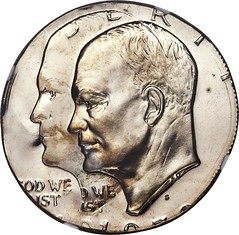
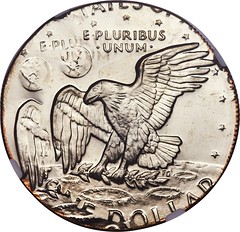
Not Just Heads Or Tails
The phrase "heads or tails" is as old as the coin flip. However, what if the coin has two heads and two tails (of the eagle)?
This amazing error coin as part of Heritage's August Auction combines several mistakes:
Proof coins are supposed to be struck to the highest standards of perfection when created by the US Mint. They are intended for Proof Sets, special collector's sets that never go into circulation. However, this proof coin really went astray when it was made and somehow escaped quality control to be available for error coin collectors today.
First, this is supposed to be a dollar but was struck on a Half Dollar planchet. Next, the portrait as well as the reverse are widely doubled, allowing you to see two heads and two tails sides. Dollar-sized error coins are popular because you can really see the mistakes and appreciate them. Also, error coins are generally more valuable when you can read the entire date, so this coin is made more desirable by being able to clearly see that it is a 1973-S Proof
To read the complete lot description, see:
1973-S $1 Clad Eisenhower Dollar -- Double Struck on a Half Dollar Planchet -- PR66 Cameo NGC....
(https://coins.ha.com/itm/errors/1973-s-1-clad-eisenhower-dollar-double-struck-on-a-half-dollar-planchet-pr66-cameo-ngc/a/1318-3959.s)

TAIWAN'S STIMULUS VOUCHERS
JP Koning writes:
"Readers might be interested in Taiwan's stimulus coupons. Issued to help citizens cope with COVID-19, they expire in December. Gotta spend them! They remind me of some of the exotic forms of depreciating or expiring money issued in the U.S. and Canada during the Great Depression."
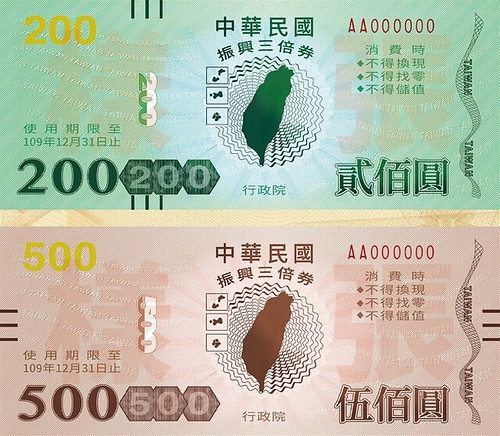
Thanks! I hadn't heard of these. JP included a link to an article about them; here's an excerpt. -Editor
Premier Su Tseng-chang announced on Tuesday (June 2) that the stimulus vouchers aimed to boost Taiwan's economy amid fallout from the coronavirus (COVID-19) will become available July 1 and redeemable starting July 15.
Residents will be able to select any of the four types of vouchers that suit them — hard copies, credit card payments, contactless smartcards, or mobile payments. The vouchers will be valid until December 31, 2020.
Those favoring hard copies can “purchase” vouchers with a total value of NT$3,000 (US$100) at the cost of NT$1,000. They will come in groups of five NT$200 coupons and four NT$500 coupons.
The vouchers can be pre-ordered at the country's four major convenience store chains from July 1 and distributed starting July 15 via National Health Insurance (NHI) card or NHI app, the same way Taiwan's ID-based mask rationing system works. People can also visit the 1,300 post offices from July 15 to buy the stimulus vouchers directly.
Individuals eligible for the measure include Taiwanese citizens and foreign spouses who hold Alien Resident Certificates (ARCs). Around 1.2 million residents from low-income households will have NT$1,000 transferred to their bank accounts, which can be put towards a stimulus voucher.
The vouchers are redeemable at brick-and-mortar retailers, restaurants, night markets, cultural venues, hotels and accommodation businesses, as well as for railway transport services. They cannot be used on e-commerce platforms; to pay taxes, traffic tickets, and credit card bills; or to buy cigarette products, stocks, and coupons, wrote CNA.
The "hardcopy" vouchers will be interesting numismatic souvenirs of these interesting times, just like the Tenino wooden scrip notes discussed earlier. Are numismatic museums planning to acquire examples? -Editor
To read the complete article, see:
Taiwan's stimulus voucher scheme to kick off July 1
(https://www.taiwannews.com.tw/en/news/3943446)
To read an earlier E-Sylum articles, see:
MORE ON THE 2020 TENINO WOODEN SCRIP
(https://www.coinbooks.org/v23/esylum_v23n29a29.html)
CBS TENINO WOODEN MONEY SEGMENT
(https://www.coinbooks.org/v23/esylum_v23n29a30.html)
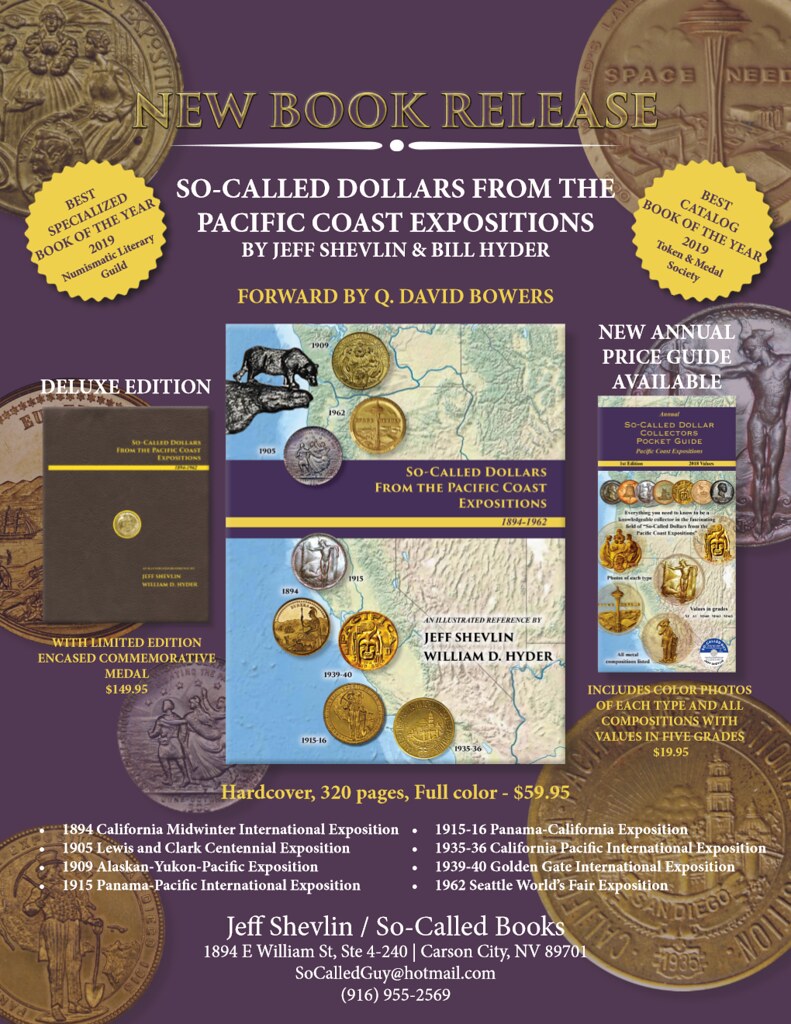
ARGENTINA IMPORTS BANKNOTES
Dick Hanscom passed along this article about inflation and banknote issuance in Argentina. Thanks. -Editor
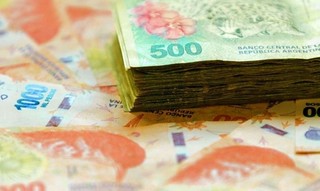 Argentina is rushing to import banknotes as its national mint struggles to keep pace with soaring central bank issuance and inflation of more than 45%. The mint is importing printed bills for the first time in five years and is also boosting its purchases of the paper used to make banknotes, according to three people with direct knowledge of the matter.
Argentina is rushing to import banknotes as its national mint struggles to keep pace with soaring central bank issuance and inflation of more than 45%. The mint is importing printed bills for the first time in five years and is also boosting its purchases of the paper used to make banknotes, according to three people with direct knowledge of the matter.
The pace of monetary issuance has accelerated in recent months as the central bank creates pesos that the government then uses to pay for its coronavirus stimulus plans. The bank has transferred 1.3 trillion pesos (US$ 19 billion) to the administration so far this year.
The nominal value of bills and coins in circulation jumped 80% this month from a year earlier. The pace at which consumer goods prices are rising increases households' need for cash.
The mint is currently operating at 100% capacity for the first time since 2015, and has stepped up purchases of the raw material for its banknotes from abroad. Sweden's Crane Currency is providing paper to print 1,000-peso bills while Russia's state-owned Goznak is providing the paper for 200-peso bills.
There's also an ongoing international tender to import 250 million bills worth 500 pesos each, according to the official gazette.
A spokesperson for the mint said that if this tender is successful, there won't be any shortage of bills. A central bank spokesman said the institution isn't seeing any problems caused by insufficient bank notes.
The mint's ability to meet the country's demand for cash was undermined at the start of the year, when the government scrapped a plan to begin printing 5,000 peso bills for the first time.
To read the complete article, see:
Money, money, Argentina importing banknotes and with the national mint working 24/7
(https://en.mercopress.com/2020/07/29/money-money-argentina-importing-banknotes-and-with-the-national-mint-working-24-7)

BRITISH COIN AND NOTES TO FEATURE ETHNIC FIGURES
This BBC News article highlights potential changes to British coins and banknotes. -Editor
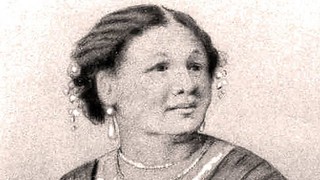 Black, Asian and minority ethnic figures (BAME) are set to feature on British notes and coins for the first time.
Black, Asian and minority ethnic figures (BAME) are set to feature on British notes and coins for the first time.
Chancellor Rishi Sunak is considering proposals from a campaign group for legal tender to be more inclusive, according to the Sunday Telegraph.
Mr Sunak has asked the Royal Mint to come up with new designs honouring BAME figures.
Military nurse Mary Seacole and spy Noor Inayat Khan are being considered.
The former Conservative parliamentary candidate Zehra Zaidi is leading the Banknotes of Colour campaign.
She says no non-white person has ever been featured on British currency.
"Who we have on our legal tender, our notes and our coins, builds into a narrative of who we think we are as a nation," she told BBC News.
"People from all backgrounds helped build Britain."
BAME people who have served the nation - such as military figures and nurses - have been put forward for the proposed set of coins.
Two years ago Ms Zaidi started a petition for the British World War Two secret agent Noor Inayat Khan, who was also a descendant of Indian royalty, to be featured on a coin, but the campaign fell on deaf ears.
"She was the first female radio operator to be sent to enemy-occupied France," said Ms Zaidi.
"She was one of only four women in history to receive the George Cross."
To read the complete article, see:
BAME people set to feature on British notes and coins
(https://www.bbc.com/news/business-53547483)

THE MOST AND LEAST COUNTERFEITED CURRENCIES
Dick Hanscom passed along this MSN slide show on the most and least counterfeited currencies around the world. Thanks. Among the least counterfeited are the currencies of New Zealand and Norway. -Editor
Suitcases of forged banknotes aren't just the stuff of heist movies and spy novels. Every day banks and governments are working hard to stop the fraudsters but some are more successful than others. Click or scroll through to see the countries with the least and most counterfeited currencies across the globe. First let's look at currencies that tend to avoid forgery. The Kiwi dollar (US$0.72) is one of the world's least counterfeited currencies. It only has one counterfeited note or coin per 1,000,000 in circulation. But although the Reserve Bank of New Zealand acknowledge they have low levels of forgery compared with other countries, they still keep an eye out to make their notes and coins as fake-proof as possible.
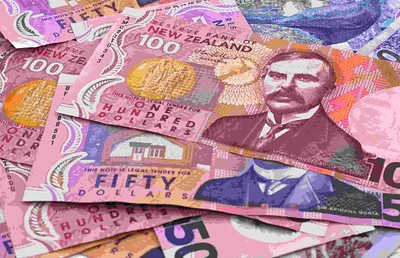
The New Zealand dollar is made of polymer (a type of plastic), which is designed to be harder to forge. And the notes have several security features to make them harder to counterfeit. Each note has two transparent windows: one is oval-shaped and has the denomination of the note embossed in it, and the other is in the shape of a curved fern leaf. A real note should have both windows there properly embedded in the note - if they look ‘stuck on', there may be a problem.
Among the most faked currencies are those of China India, and Mexico, with (no surprise) the world largest currencies, the Euro and the U.S. dollar, at the top of the list. -Editor
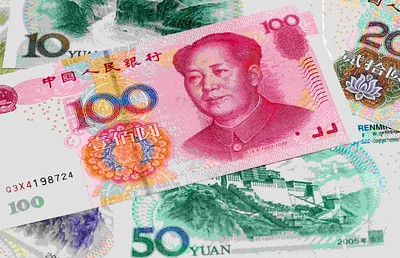
While the 2015 100 yuan ($14) note still features Mao Zedong, it's now printed with color-changing ink on the pattern of the number 100. The color changes from golden to green when the angle is adjusted. And a new security line on the right of the note changes from hot pink to green when the viewing angle is adjusted.
In late 2019, in another attempt to catch forgeries the central bank issued new 50 yuan ($7), 20 yuan ($2.90), 10 yuan ($1.40), and 1 yuan (14 cents) notes, which have the same color-changing ink as the 100 yuan ($14) notes, and the security line running down the middle. Despite all the government's efforts, it seems that there's still a high level of forged bank notes in China. Forged 100 yuan ($14) notes are sold for just 6 yuan (86 cents).
To read the complete article, see:
Fake money? The most and least counterfeited currencies around the world
(https://www.msn.com/en-us/money/news/fake-money-the-most-and-least-counterfeited-currencies-around-the-world/ss-BB17skNT)
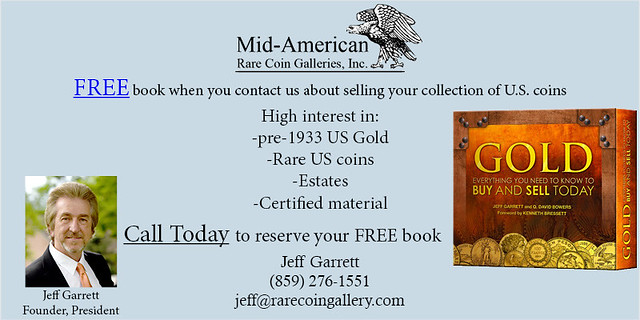
ROMAN BUTIN'S MECHANICAL SWORD COIN
Here's the latest creation from master coin carver Roman Butin (also known phonetically as "Roman Booteen". Check out the video! This is really cool. -Editor
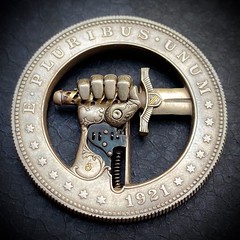
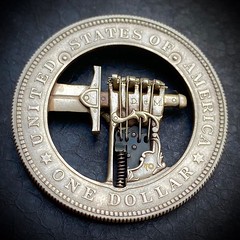
The ancient art of the hobo nickel has been around since the 18th century, but Russian artist Roman Booteen keeps the craft alive with his extraordinary coin carving designs. From a gold bug with moving wings to a mechanical beating heart, Booteen is a modern master at turning old coins into extraordinary bas relief sculptures. His latest design is no exception—he's meticulously modified a U.S. dollar coin (from 1921) to feature a 3D glove and sword with a secret mechanism.
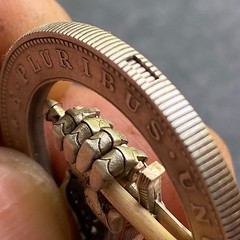 Hand-cut and engraved from the center of the coin, Booteen's incredibly intricate design features a metal armor glove with decorative, hand-engraved details. The glove is holding onto a sword that seems to be plunged into the side of the coin. The piece is already impressive as a still sculpture; however, once the hidden button on the outer edge of the coin is pressed, the metal components come to life. An integrated spring allows the fingers of the glove to move, as if it's gasping the sword's handle.
Hand-cut and engraved from the center of the coin, Booteen's incredibly intricate design features a metal armor glove with decorative, hand-engraved details. The glove is holding onto a sword that seems to be plunged into the side of the coin. The piece is already impressive as a still sculpture; however, once the hidden button on the outer edge of the coin is pressed, the metal components come to life. An integrated spring allows the fingers of the glove to move, as if it's gasping the sword's handle.
To read the complete article, see:
Artist Turns Dollar Coin Into Incredible Sculpture With Hidden Movable Mechanics
(https://mymodernmet.com/sword-coin-hobo-nickel-roman-booteen/)
To view Roman Butin's Facebook feed:
Roman Booteen
(https://m.facebook.com/roman.booteen)
To read the earlier E-Sylum articles, see:
ROMAN BOOTEEN'S MECHANICAL GOLD BUG COIN
(https://www.coinbooks.org/v20/esylum_v20n49a36.html)
ARTICLE PROFILES COIN CARVER ROMAN BUTIN
(https://www.coinbooks.org/v21/esylum_v21n28a28.html)
COIN CARVER ROMAN BUTIN'S NEW DESIGN
(https://www.coinbooks.org/v21/esylum_v21n42a35.html)
ROMAN BUTIN'S BEATING HEART COIN
(https://www.coinbooks.org/v22/esylum_v22n41a29.html)

LOOSE CHANGE: AUGUST 2, 2020
Here are some additional items in the media this week that may be of interest. -Editor
How to cull your book collection... or not
Bibliophiles may be interested in this Washington Post article with reader comments on how to cull one's book collection during the pandemic. -Editor
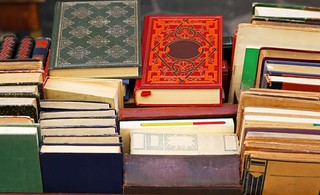 Readers had quite a few feelings about this most recent essay, chiming in with memories about culling their own personal libraries, advice on what books should stay and go and opinions on why you should never — under any circumstances — get rid of your books. Some got philosophical, others practical. “What is more important, the physical book or the words in it?” wondered The Continental Op. Responded Fred Gee: “Being able to find the door in a fire.”
Readers had quite a few feelings about this most recent essay, chiming in with memories about culling their own personal libraries, advice on what books should stay and go and opinions on why you should never — under any circumstances — get rid of your books. Some got philosophical, others practical. “What is more important, the physical book or the words in it?” wondered The Continental Op. Responded Fred Gee: “Being able to find the door in a fire.”
“It's a dilemma all collectors of books face at one time or another,” writes commenter RBSchultz. “When I last moved, I gave away to the local library my vast collection of World War II and Vietnam War books so that others might enjoy them. After I moved, I decided that my collection of photography books was too heavy and large in volume. These went to my local Friends of the San Francisco Library where the sale proceeds supported the library. My vast collection of polar and mountaineering books will ultimately go to auction. There are many ways to declutter your library. you just have to choose what makes you feel gratified as to their ultimate destination.”
Sidneyf “is a ruthless culler and downsizer from way back, but if there are even slight differences between your books, they are not duplicates, as they are not the same. Each evokes different memories and appreciation from you; find a way to keep them all.”
To read the complete article, see:
Readers have many opinions on how to cull your book collection — and also why you never should
(https://www.washingtonpost.com/entertainment/books/readers-have-many-opinions-on-how-to-cull-your-book-collection--and-also-why-you-never-should/2020/07/31/c5a6d044-d26f-11ea-8c55-61e7fa5e82ab_story.html)
Micronation Stamps
At various times we've discussed the coins of micronations such as Sealand and Hutt River Province. This Atlas Obscura article points out that these rouge principalities have issued stamps as well. -Editor
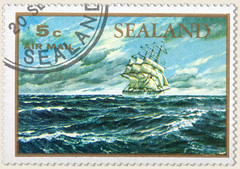 THE POSTAGE STAMP LOOKS LIKE a postage stamp is supposed to look: white, perforated edges, and part of a circular cancellation mark in the corner. It also has the country and postage clearly printed, though its depiction of the pirate Blackbeard during an attack might be more dramatic than most philatelic subjects. But it's not a postage stamp, not really, because its country of origin is Sealand—a metal platform about the size of a tennis court, off the English coast. Sealand is one of the quirky, strangely numerous states known as “micronations,” or self-proclaimed polities with no legal recognition. Some of them, to simulate legitimacy or at least make a little money, have issued their own flags, passports, coins, and yes, postage stamps.
THE POSTAGE STAMP LOOKS LIKE a postage stamp is supposed to look: white, perforated edges, and part of a circular cancellation mark in the corner. It also has the country and postage clearly printed, though its depiction of the pirate Blackbeard during an attack might be more dramatic than most philatelic subjects. But it's not a postage stamp, not really, because its country of origin is Sealand—a metal platform about the size of a tennis court, off the English coast. Sealand is one of the quirky, strangely numerous states known as “micronations,” or self-proclaimed polities with no legal recognition. Some of them, to simulate legitimacy or at least make a little money, have issued their own flags, passports, coins, and yes, postage stamps.
Laura Steward, curator of public art at the University of Chicago, who organized an exhibition at the 2020 Outsider Art Fair in New York of stamps from micronations and other dubiously defined places, believes that these tiny squares are more than a toss-off: They're art, proof of imagination, and rather sophisticated bids for public recognition. “A postage stamp is a small but mighty symbolic emissary from one particular nation to the rest of the world,” Steward writes in text accompanying the exhibit. “A functioning postal service, made visible in stamps, is an unmistakable expression of national legitimacy…. As a result, the postage stamp is an excellent vehicle for spurious, tenuous, or completely fictitious states to declare their existence.”
To read the complete article, see:
The Joy of Collecting Stamps From Countries That Don't Really Exist
(https://www.atlasobscura.com/articles/micronation-stamps)
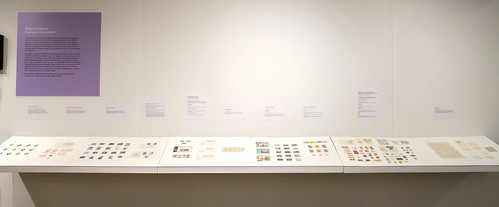
For more information on the exhibit, see:
OAF Special Projects | Bogus Cinderella
(https://www.outsiderartfair.com/program-new-york/oaf-special-projects-bogus-cinderella)
FEATURED WEB SITE: WORLDCAT.ORG
This week's Featured Web Site is suggested by John and Nancy Wilson who write:"We found this in the Summer 2020 issue of The Centinel - in the biography of Carrie Wieners Meyer (a Central States Numismatic Society Governor) a great site that has probably been in The E-Sylum - www.worldcat.org. It is a terrific site that has free registration."
It's been a long while - this was a Featured Web Site on May 10, 2009, and it's still going strong. Well worth using to locate books and information. -Editor
WorldCat is the world's largest network of library content and services. WorldCat libraries are dedicated to providing access to their resources on the Web, where most people start their search for information.

https://www.worldcat.org/

